#how to draw Cristiano Ronaldo
Explore tagged Tumblr posts
Text


DON'T BULLY ME PLS IDK HOW TO DRAW WELL DIGITALLY🙏🏼😭 (felt like it for a first post lol i tried 💔)
#erling haaland#silly#idk how to draw lol🙏🏼💔#idk how to draw lmao#cristiano ronaldo#HELP CRIS LOOKS SO BAD#I dont ship them btw lol
8 notes
·
View notes
Text
World Cup Icons: Europe XI vs South America XI
A champion from each of the 22 tournaments
There have been 22 editions of the FIFA World Cup and every champion has come from either Europe or South America, with the continents neck and neck in total titles. This allows for an intriguing challenge, building a Europe XI and a South American XI including one player from every World Cup-winning team.
Europe accounts for 12 World Cup wins, but with Italy winning back-to-back titles in the 1930s, a single player who starred in both tournaments can represent both victories. South America has 10 victories, so to complete an XI, two players are selected from one winning team where the goalkeeper and outfield player were both essential to the outcome.
Many of the players selected were the clear standout player for their team, earning individual honours such as the Golden Glove, the Golden Ball or the Golden Boot. But to form a more balanced XI, defenders who are often overlooked when it comes to awards- have to be included. The choices made reflect those who were pivotal to their nation's success, delivering some of the most outstanding performances ever seen in their positions on the World Cup stage.
Europe XI
Goalkeeper- Manuel Neuer- Germany 2014
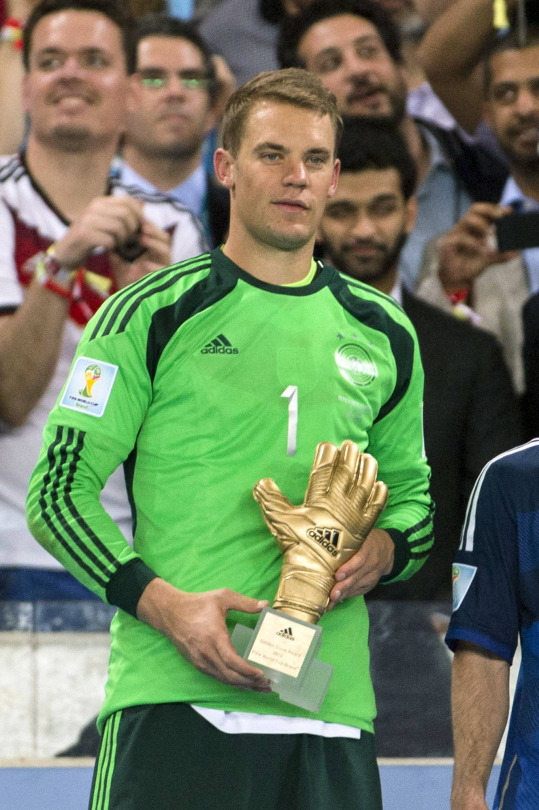
Germany immediately laid down a marker at the 2014 World Cup when they thrashed Cristiano Ronaldo's Portugal 4-0 in their Group G opener. An entertaining 2-2 draw with Ghana followed before Germany secured top spot with a 1-0 win over USA. In the round of 16 against Algeria, Neuer produced one of the most memorable goalkeeping displays in World Cup history.
Despite not being blessed with much pace in defence, Germany employed quite a high line in this game and with Algeria knowing they had pace in attack, they opted to attack as quickly as possible, looking to launch rapid counters whenever possible. Neuer was constantly alert to these dangers, looking to take charge of the situation by steaming out of his penalty area and clearing the ball into touch before the situation became really dangerous.
The game made for an interesting mix of styles, Germany looking to dominate possession inside Algeria's half, Algeria looking to get in behind Germany's highline. But on the occasions they succeeded, Neuer was always there to shut out the danger. Watching the highlights of this game back, if Neuer's performance doesn't seem as mindblowing as it was at the time, that only goes to show how Neuer revolutionised the goalkeeper position, normalising the keeper playing almost as an 11th outfield player, as we see more and more goalkeepers doing these days. But at the time, nobody was playing the role like Neuer.
Germany came through the Algerians 2-1 after extra-time to meet France in the Quarters. A Hummels header from a free-kick in the 12th minute was enough for the Germans, with Neuer producing a one-handed save to deny Benzema at the death. The semi-final against hosts and record 5-time winners Brazil promised to be a classic affair, and indeed it would go down as one of the most unforgettable World Cup games ever, unfolding in a manner noone could have anticipated.
Germany led Brazil 5-0 after 29 minutes with 4 goals coming in a 6-minute spell as the Brazilians mentally unravelled. They would lead an astonishing 7-0 before Oscar pulled the scantest of consolation goals back for the hosts in the 90th minute. In the final at the Maracana, another South American giant stood between them and the trophy in Lionel Messi's Argentina. This meeting would be a much tenser and more even affair, with both sides coming close on occasion. Neuer was rarely called on to make saves, but his huge presence in goal played a decisive role in seeing big chances for Messi and Palacio go wide of the post and then over the bar as the Argentina forwards felt pressure to be perfect with their finishing, knowing anything less could be denied by the strong, powerful arms of the Germany number 1.
In the end the decisive moment came in the 113th minute when substitute Mario Gotze produced an excellent finish and it would prove enough to win Germany a 4th World Cup. At the end of the match, there was no question over who would receive the Golden Glove for the tournament's best keeper as Neuer had stood out as one of the best players, let alone just goalkeepers. His ability to launch quick German attacks with long, accurate kicks and throws and aswell his willingness to help out his defence by rushing out of goal to cut out danger. Neuer's performances at the 2014 World Cup had a significant influence on the evolving of the goalkeeper position, with ability to build out from the back by having a goalkeeper comfortable with the ball at his feet becoming a prerequisite for most teams challenging at the top of Football.
Defence- Fabio Cannavaro- Italy 2006
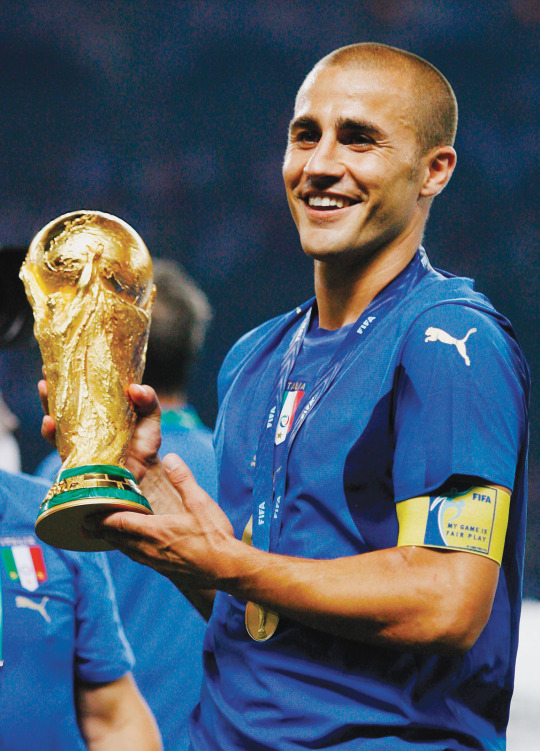
Italy went into the 2006 World Cup under the cloud of the Calciopoli scandal. The club most hurt by its fallout was Juventus, the team of the Azzurri captain at the time Fabio Cannavaro, who were stripped of their two most recent Serie A titles and demoted to Serie B. Under the weight of such a scandal, little was expected of Italy from outsiders but they quietly went about their business in Group E, with Cannavaro helping Italy to cleansheets in 2-0 wins over both Ghana and Czech Republic. Sandwiched in between these games was a 1-1 draw with USA which featured 3 red cards, 1 for Italy and 2 for USA and aswell the only open play goal Italy would concede across the whole tournament, an own goal from Zaccardo.
Italy's round of 16 meeting with Australia was complicated by the 50th minute dismissal of centre-back Marco Materazzi. A man down and without his usual partner in the centre of defence, Cannavaro faultlessly held firm at the back as Australia felt themselves on the verge of a huge upset. Instead it was Italy who would snatch the game at the death courtesy of a Francesco Totti penalty in the 95th minute. The Quarter-Final vs Ukraine was a simpler affair for Italy, with an early goal from Zambrotta followed by a Totti brace to ease the Azzurri to a 3-0 win.
After a kind draw up to this point, Italy now faced the hosts Germany and were firmly cast into the role of underdogs. An entertaining game with both teams coming close to scoring appeared to be heading for penalties when Grosso produced a stunning finish in the 119th minute to give Italy the lead. As Germany pushed for an equaliser in the dying seconds, Cannavaro bravely charged out from defence to seize upon a loose ball and send Italy on their way in the other direction. The move eventually landed at the feet of Del Piero who made sure of Italy's spot in the final at the expense of the host nation.
The final against France would be Cannavaro's 100th cap and he faced perhaps the toughest test in world football at the time, defending Thierry Henry, who had bettered him in their Champions League Quarter-Final meeting earlier that season. The match got off to a nightmare start for Italy, as they found themselves behind after just 7 minutes courtesy of a Zinedine Zidane 'panenka' penalty that just crossed the line after hitting the underside of the bar. Italy were behind for just 12 minutes however before Materazzi responded.
Materazzi was later involved in the most iconic World Cup final moment outside of a goal when he was headbutted in the chest by fellow goalscorer Zinedine Zidane in the 100th minute, with Zidane seeing red. This proved key as now France were without both Zidane and Henry (who'd been subbed off for Trezeguet) for the penalty shootout. Trezeguet would miss as all 5 Italian's would score and Italy were World Champions for the first time since 1982.
Cannavaro's role in the success had not gone unnoticed by anyone. Standing at just 5 feet 9, he stood out for his lack of height at the heart of the defence, but he was still able to command the air due to his excellent timing of leap and desire to meet the ball. Cannavaro earned the nickname "The Berlin Wall" due to his performance not just in the Final which was held in Berlin's Olympic Stadium, but across all 7 games in which he scarcely put a foot wrong. He played every minute of every game and didn't receive a single caution. Cannavaro's contribution to Italy's 5 cleansheets and eventual triumph earned him a transfer to Real Madrid and even more significantly won him the Balon D'or for the world's best footballer later that year. He remains at the time of writing the last defender to win the Balon D'or, as it approaches 20 years. Many felt it was earned as he produced one of the most memorable campaigns from a defender in World Cup history.
Defence- Franz Beckenbauer- West Germany 1974
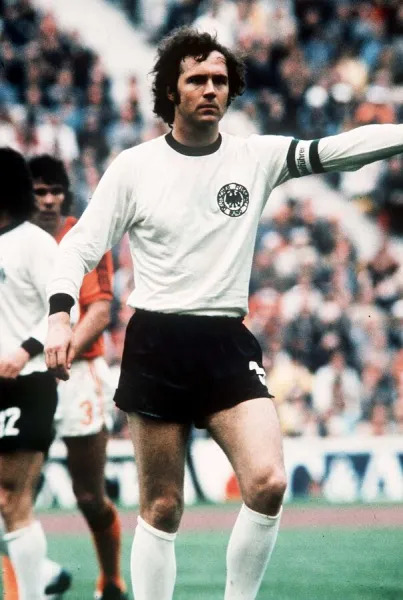
Beckenbauer became West Germany captain in 1971 and lifted the Euros the following year. He went into the home World Cup of 1974, hoping his first World Cup as captain would be as successful. West Germany and Beckenbauer got off to the ideal start with two wins and two cleansheets against Chile and Australia, before suffering a shock 1-0 defeat to East Germany. However this may have proven to be a blessing in disguise, as it meant West Germany finished 2nd and went into the easier Group B of the second Group phase, along with Poland, Sweden and Yugoslavia. Whereas East Germany found themselves with the Netherlands, Brazil and Argentina.
West Germany beat Yugoslavia 2-0, Sweden 4-2 and Poland 1-0 to top the group which progressed them through to the World Cup final. There they would meet the Netherlands who had made the tournament their own, showcasing their Total Football to the world, a system built on high pressing and high technical quality in possession, typified by the team's talisman Johann Cruyff. In reaching the final the Dutch had scored 14 goals and conceded just once.
The Netherlands added their 15th of the tournament just 2 minutes into the final after Cruyff was felled in the box following a marauding run. Neeskens converted the spotkick to score the fastest goal in World Cup Final history. West Germany were trailing before they'd even touched the ball but responded with a penalty of their own from Breitner in the 25th minute.
With half-time approaching, Gerd Muller gave West Germany a lead that they were able to see out for the remainder of the game, meaning Beckenbauer was the first captain the lift the new World Cup trophy that we all know of today, with Brazil being allowed to permanently keep the Jules Rimet edition after winning in 1970.
The Netherlands had gone into the final highly favoured with many anticipating the great battle between the best attacking player of the time, Johann Cruyff up against the best defensive player, "Der Kaiser" Franz Beckenbauer. Cruyff got off to an excellent start winning the penalty, but from that point on Beckenbauer was able to help limit his influence with his reading of the game. Whilst teammate Vogts' was tasked with man-marking Cruyff, Beckenbauer was usually in the vicinity, cutting out passing lanes into him whenever possible and sweeping up any danger, like a natural sweeper.
However, it was Beckenbauer's actions on the ball which enabled him to go beyond the role of a standard sweeper and instead redefine the Libero role in his image, as his abilty to step into midfield with the ball helped his team to beat the first line of the Dutch press, as he gave them a numerical advantage, along with his elegant ball-carrying and assured passing which were key in leading West Germany to victory. From this role he set the tempo of the game, speeding it up and slowing it down depending on what was required and Der Kaiser's performance not only in the final but across the entire tournament made it one of the iconic World Cup campaigns.
Defence- Bobby Moore- England 1966
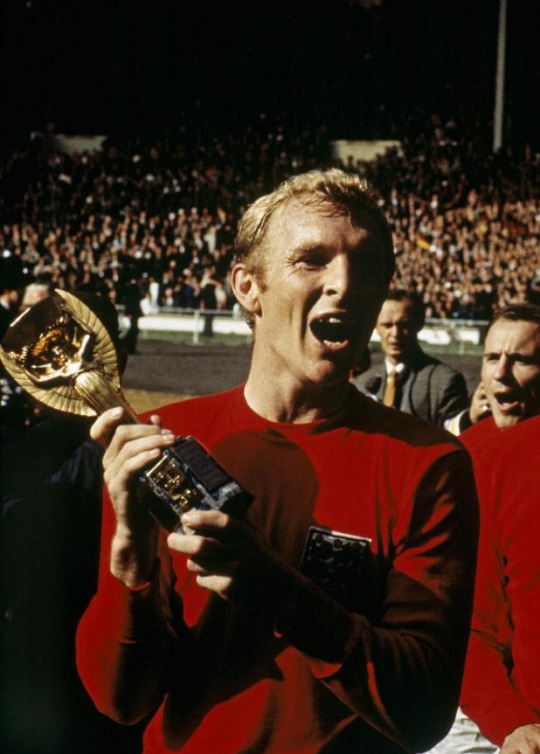
With Bobby Moore captaining and at the heart of the England defence, the Three Lions began their campaign to try and win the Jules Rimet trophy with a 0-0 draw with Uruguay. They made it through the group phase without conceding a goal with back-to-back 2-0 wins over Mexico and France to qualify for the Quarter-Finals where they would meet Argentina.
One of the worst tempered games in World Cup history, with England manager Alf Ramsey referring the opposition as "animals" after the game, the Three Lions advanced past a 10-man Argentina 1-0 with Hurst scoring the only goal in the 78th minute. In the semis, England and Moore would meet their sternest test yet in the shape of Portugal, spearheaded by the star striker of the tournament, Eusebio who was fresh off a hattrick in the quarter-finals against North Korea.
Moore was able to contain Eusebio aswell as anyone could, though he could not prevent him from scoring a penalty, the first goal England had conceded across the whole competition. It was however nothing but a consolation, as England progressed through 2-1. Awaiting them in the final was West Germany. Infront of 96,924 passionate fans at Wembley Stadium, England fell behind after 12 minutes but equalised through Hurst 6 minutes later. Quick thinking from Moore saw him take a free-kick quickly onto the head of the unmarked Hurst before the Germans had chance to organise.
Peters gave England the lead in the 78th minute as they came within 1 minute of normal time of lifting the trophy. Then the Gerrmans equalised in the 89th minute through Weber. Hurst restored England's lead in the 101st minute with the most controversial goal in World Cup final history, with the Soviet linesman awarded a goal for a shot off the crossbar which did not appear to fully cross the line. In the final minute of extra-time, Moore launched a long forward pass to Hurst, with most of the German team still up the pitch pushing for the equaliser, Hurst advanced on goal as Kenneth Wolstenholme uttered the immortal words "there's people on the pitch, they think it's all over." and "It is now." just as the shot from Hurst hit the back of the net, making him the first player to score a hattrick in a World Cup final.
As much as a victory for England, the tournament of '66 was also seen as a victory for West Ham, as the hattrick hero Hurst, Final goalscorer Peters and captain Moore all represented the Hammers. The images of Moore receiving the Jules Rimet Trophy from Queen Elizabeth II and later lifting the trophy aloft on the shoulders of his teammates are among the most iconic in British sporting history.
His performances are remembered as some of the best defensive displays in World Cup history, as his style of defending which prioritised clean, perfectly timed tackling over the more physically robust approach deployed by most at the time, won him admirers all over the world. Moore also distinguished himself above his peers for his elegance in possession with composed, stylish passing not as commonly associated at the time with central defenders.
Midfield- Xavi- Spain 2010
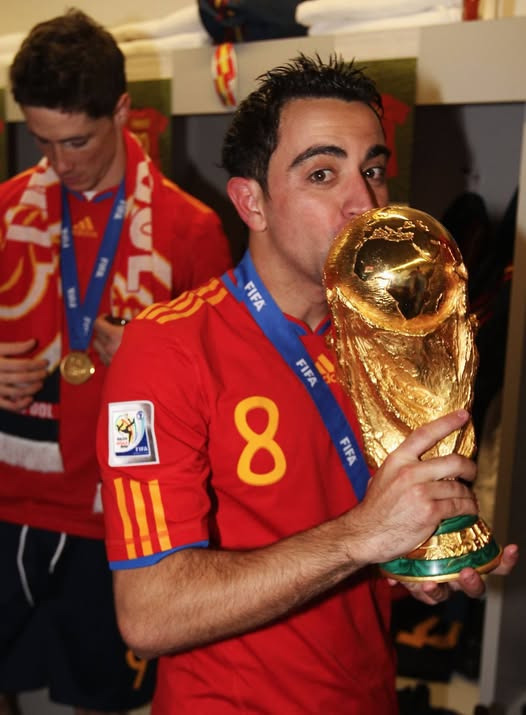
Spain came into the 2010 World Cup as favourites, having ended their long-wait for a first major trophy since 1968 2 years prior at the Euros. They hoped they would now be able to end their wait for a first ever World Cup trophy, but the hunt got off to its worst possible start with a shock 0-1 defeat against Switzerland. Despite dominating possession with 74% of the ball, Spain's 'tiki taka' was unable to breakdown the bus parked infront of their goal by Switzerland.
That meant Spain were on the brink going into their second fixture with Honduras but two goals from David Villa was enough to calm any doubts which may or may not have been building. Xavi completed 105 of his 114 passes, with 5 of them key passes. Spain then secured top spot by coming through 2-1 against Chile. Against Marcelo Bielsa's relentless press, the tiki taka stood up to the challenge, with Xavi still able to complete 91 of 102 passes.
In the round of 16, Spain faced Portugal in a fiercely contested Iberian derby. Xavi made 114 successful passes, but one was the most important of all, a backheeled flick to put David Villa through against the keeper and his goal was enough to defeat Portugal's resistance. Against Paraguay in the Quarters, Spain faced another difficult test as the South Americans looked to unsettle them physically. Xavi was key in ensuring this approach was unsuccessful as he remained unrattled with his calm passing keeping Spain in control. The breakthrough came in the 83rd minute and again it was David Villa doing enough to send Spain through.
In the semis against Germany, Xavi produced what was maybe his best performance of the tournament. Against the talented midfield of Khedira, Schweinsteiger, Ozil and Trochowski (with a young Toni Kroos coming off the bench), Xavi ran the game completing 95 of his 103 passes (92%). One such pass was a perfectly placed corner which met the forehead of Carles Puyol, whose goal in the 73rd minute took Spain through to a first World Cup final.
Netherlands were the opponents in the 2010 final, and unlike in the 1970s when the Oranje made back-to-back Finals with their Total Football, it was opposition Spain this time renowned for their pure Football. And the Dutch would take the role of spoilers, not even attempting to match Spain from a football perspective, instead looking to make it as physical and bad-tempered as possible in the hope of unsettling Spain's gameplan.
Xavi though could not be deterred and completed 114 passes in a final which went to extra-time before being won by Andres Iniesta in the 116th minute. Spain would win the World Cup scoring just 8 goals, but they didn't concede a single goal in the knockout stages despite facing quality opposition. Xavi was key in this as it's difficult to score when you don't have the ball for such long periods and Xavi's 599 completed passes at a success rate of 91%, was the highest at the tournament. His ability to constantly keep the ball moving with sharp, short passing was essential in allowing Spain to establish dominance over opponents, sapping their energy and belief as they chased shadows. He was doing far more than just recycling possession however, as he created 30 chances, the most at the tournament.
A special mention most also go to Andres Iniesta, as in this time period it was difficult to mention one without the other, so connected were they on the football pitch it was often as though they were operating from the same brain.
Midfield- Lothar Matthaus- West Germany 1990
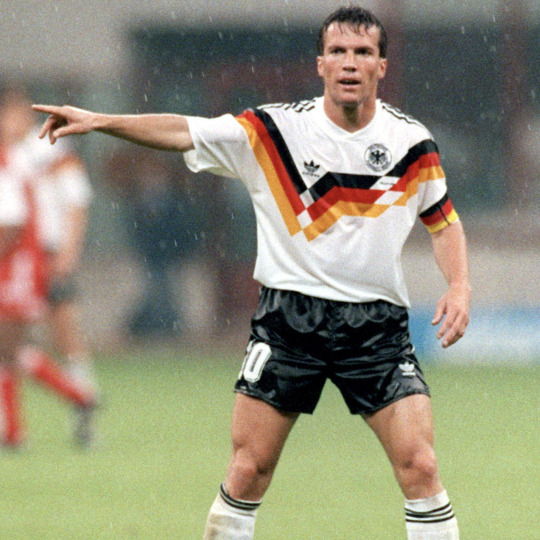
Matthaus helped West Germany get off to an auspicious start at Italia 90, scoring a brace in his team's 4-1 opening win against Yugoslavia. Both goals came from shots outside of the box, with Matthaus receiving the ball inside his own half for his second, carrying the ball forward with real purpose, cutting inside a player and leaving him for dead before arrowing a menacing shot into the bottom corner. UAE were put to the sword next as Matthaus added another goal from outside the box, this time on the volley to get on the scoresheet in a 5-1 win.
After a 1-1 draw with Colombia was enough to secure top spot, West Germany met the Netherlands in the round of 16. This match was not just a rivalry of nations but of clubs aswell, as West Germany had 3 Internazionale stars including Matthaus, and the Dutch had 3 stars of city rivals AC Milan. Two Inter players would get the goals, though this time it was not Matthaus but Klinsmann and Brehme who helped the Germans to a 2-1 win in a game which was played 10 vs 10 from the 22nd minute onwards following an incident between Rudi Voller and Frank Rijkaard.
In the Quarters against Czechoslovakia, Matthaus would make the difference scoring the game's only goal from the penalty spot to set up a semi-final meeting with England. After a 1-1 draw, Matthaus was one of four Germans to convert their spotkick and misses from Pearce and Waddle meant a repeat of the final from four years earlier, West Germany vs Argentina. West Germany exacted revenge in a one-sided final which saw Argentina finish the match with 9 men, though they had to wait until the 85th minute until the goal finally came courtesy of a Brehme penalty.
In captaining his team to World Cup glory, Matthaus had distinguished himself as the finest central midfielder in the world at the time, with his box-to-role allowing him to command games with strong contributions in both attack and defence. His intelligence, physical presence and attacking instincts had all been on show at this tournament and he was the standout player in his team's deserved triumph.
Midfield- Zinedine Zidane- France 1998
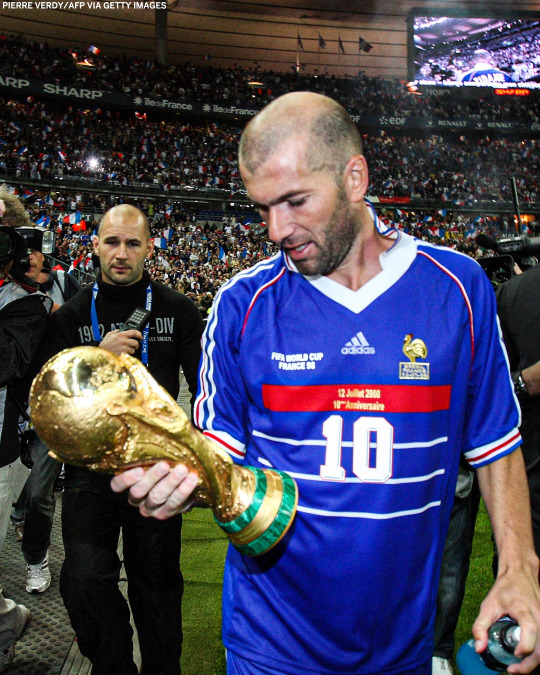
France's midfield talisman Zinedine Zidane helped his nation get off to the strongest possible start at the 1998 World Cup, which they hosted for the first time, orchestrating their 3-0 win over South Africa and assisting the opening goal from a corner. Zizou was continuing his good start at the tournament against Saudi Arabia until he needlessly lost his temper and saw red for a foolish stamp with France comfortably leading. A two-game ban saw Zidane miss the final group game against Denmark and France's trickier than expected Round of 16 match with Paraguay, with France needing a 114th minute Golden Goal winner from Laurent Blanc.
Zidane was back in the 11 for a mouth-watering Quarter-Final tie with Italy. In a tightly contested contest with few clear openings, Zidane was one of France's strongest performances and stepped up first for them in the shootout, coolly dispatching his kick on the way to helping his nation through to the final four. There they met surprise semi-finalists Croatia, in a match where Zidane struggled to exert influence. Aside from forcing the keeper into a scurrying save from an excellent volley from range, Zizou was kept subdued by the numbers Croatia surrounded him with, and he was unable to dribble away from them or open them up with his passing. It was instead right-back Lilian Thuram who was the unlikeliest of heroes, scoring a brace to take France to their first ever World Cup Final.
Waiting for them was holders Brazil, spearheaded by the star of the tournament to that point, Ronaldo. However, after France's struggles at every stage just to reach the final, the match with Brazil ended up being their most straightforward of the knockout rounds with France and Zidane in particular saving their best until last. As was typical with Zizou, just when the pressure was at its highest, he rose to the occasion and dominated the affair. His 27th minute header gave France the lead, and on the stroke of half-time he added another with his head, with both goals coming from corners. Aswell as converting set-pieces, Zidane also created 3 clear chances in the game as Brazil appeared ill-prepared to deal with his majesty. Petit added the icing on the cake in stoppage time to give the hosts a scarcely believable 3-0 victory over the mighty Brazil.
Zidane's impact in the final left him undoubtedly as the star of the campaign. With the pressure on his shoulders to be the one to deliver, he had made a strong start to the tournament before a moment of stupidity had threatened to derail it. However he recovered from the setback and a largely ineffective semi-final performance to deliver a vintage performance with the trophy at stake, and therefore there is no doubt he deserves his selection in the team as France's representative for their first ever World Cup triumph.
Attack- Helmut Rahn- West Germany 1954

Rahn was left out of West Germany's team for their opening game at the 1954 World Cup in Switzerland, with manager Sepp Herberger gambling on his side's ability to progress from the groups without needing to tire out his best players, keeping them fresher for the deciding rounds. The plan got off to a good start with West Germany beating Turkey 4-1. Rahn returned to the 11 for the second group game against the 'Mighty Magyars' of Hungary, considered the strongest team in the competition. This strength was showcased as Hungary destroyed West Germany by 8 goals to 3, Rahn netting the Germans' second consolation goal.
This heavy defeat meant a play-off game between West Germany and Turkey to decide who would qualify in 2nd place behind Hungary. Just like in the opening meeting against Turkey, Herberger again opted to rest players, including Rahn, trusting his squads depth to not suffer further humiliation. West Germany would dish out their own thrashing this time, annihilating Turkey 7-2 to safely progress to the Quarters.
Rahn was brought back in for the meeting with Yugoslavia and retained his place for the remainder of the tournament, he added West Germany's 2nd in the 85th minute to ensure a 2-0 progression for his side. West Germany entered the final with renewed confidence after dismantling Austria 6-1 in the semi-final. They would enter the final as clear underdogs however, due to it Hungary being the opposition, led by the great Ferenc Puskas, who had recovered from injury in time to start the Final.
And it was the great Hungarian who would give his team the lead inside just 6 minutes. This was followed two minutes later by a second Hungarian goal, this time from Czibor and another thrashing similar to the 8-3 in the Group Stage now looked on the cards. However West Germany halved the deficit just 2 minutes later as Morlock scored the third World Cup Final goal inside the opening 10 minutes.
In the 18th minute, Rahn levelled things up for the West Germans, prodding home a cross at the backpost that had evaded the goalkeeper. As the rain began to fall heavily in Bern in the second half and the pitch deteriorated, innovative new studs invented by Adi Dassler for the German team began to have an impact. But the Hungarians remained dangerous hitting the crossbar, the sidenetting from close range and having a shot blocked the line. However it was the West German's who would net the game's decisive goal. With the ball breaking to Rahn in space on the edge of the box, he had time to cut inside the onrushing defender then find the bottom corner with his left foot.
Hungary almost responded just two minutes later but their equaliser was ruled out for offside and West Germany held on to achieve "The Miracle of Bern" with Helmut Rahn (known as "Der Boss") becoming the hero of Bern, with his two goals turning the game on its head. With this World Cup being Germany's first appearance since before the Second World War, this match is credited with lifting the morale of the German people after the national shame of the Nazi regime, and Rahn's huge part in it means he is most deserving of his spot in this side.
The 3-2 final had been a fitting finale between two teams who still top the charts for most goals at a single World Cup. Hungary hold the record with 27 goals, despite playing just 4 games at the 1954 edition, and combined with West Germany, a total of 52 goals were netted between them.
Attack- Giuseppe Meazza- Italy 1934 & 1938
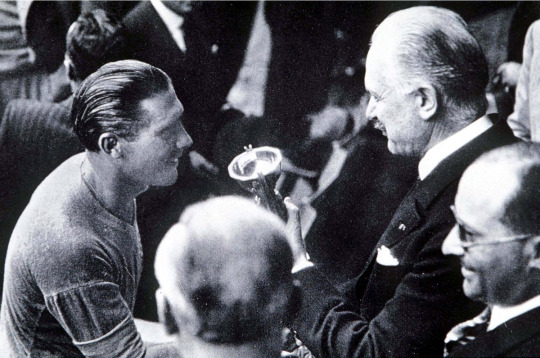
The 1934 World Cup was played in a straight knockout format beginning at the round of 16 stage. In their opening match Italy trounced USA 7-1 with Meazza adding the 7th goal. In the Quarters, Italy met Spain and after a 1-1 draw, the two sides came back for a replay the very next day. Meazza scored the replay's only goal to put Italy into the semi-finals where they would meet Austria. One goal was again enough to put them into the final against Czechoslovakia. The Czechs took the lead and were 10 minutes away from winning the World Cup before Orsi equalised and sent the game to extra-time. 5 minutes into extra-time and Schiavio scored the decisive goal to make Italy the second nation to ever lift the Jules Rimet Trophy.
Four years later and Italy set off to France in defence of their World Cup with Meazza now captaining the side. In the same format as 1934, Italy began at the round of 16 stage, needing extra-time to advance past Norway 2-1. In the quarters they triumphed 3-1 over hosts France to meet Brazil in the semi-finals. Meazza scored what would turn out to be the decisive goal from the penalty spot, as a late consolation goal could not prevent Italy advancing through 2-1. In the final Italy proved themselves to be the worthiest of champions by defeating Hungary by 4 goals to 2.
Meazza is one of only 3 Italians to win the World Cup twice, and is the only Italian to have scored in 2 World Cup winning campaigns which gives him the edge in getting into this side over fellow forward Giovanni Ferrari who also won twice, but scored only in the 1934 edition. Before the Golden Ball became an official prize, Meazza was retrospectively named the best player of the 1934 World Cup in the book "World Cup: A statistical summary", which is part of the official FIFA library. He was also considered the best player of the 1938 edition by ESPN Deportes.
Attack- Kylian Mbappe- France 2018
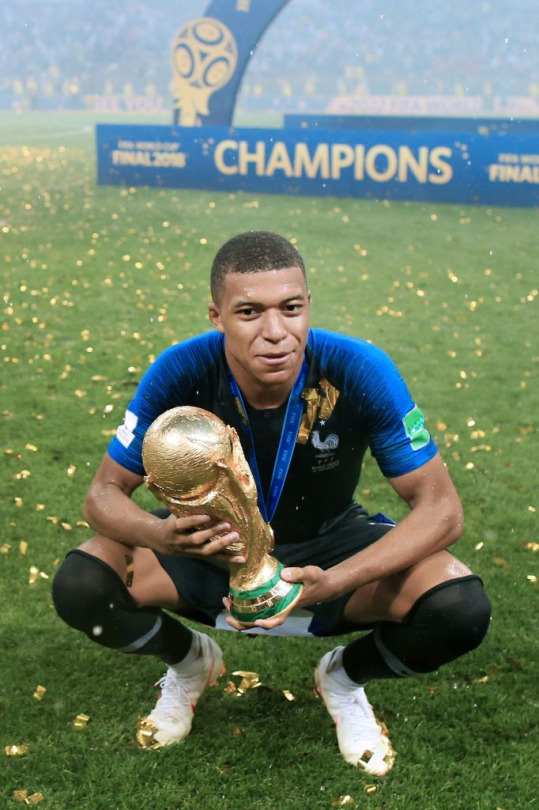
After a 2-1 opening game win against Australia, 19 year old Kylian Mbappe became France's youngest ever goalscorer at a World Cup when he netted from close range to give Les Bleus a 1-0 victory against Peru. A dour 0-0 draw with Denmark secured top spot and set up a mouth-watering round of 16 tie with Argentina.
Mbappe produced the most memorable performance of the tournament, terrifying Argentina, the oldest team to make the knockout rounds, with his electrifying pace and youthful exuberance. Picking up the ball inside his own half, Mbappe exploded down the middle of pitch with only the goal in his mind. No Argentina player could get near enough to foul him until he'd already reached the penalty area and Griezmann converted from the spot.
Argentina responded to take a 2-1 lead but after Pavard had equalised for France, Mbappe took over the game once more, proving himself to be unstoppable by netting a brace. The Argentines simply could not live with him and a late consolation goal failed to prevent Mbappe and co powering past them into the last 8. There France met Uruguay and a more low-key affair was won 2-0 by the French.
After a more subdued performance against Uruguay, Mbappe came to life once more in the semi-finals against Belgium, almost producing a stunning assist with an ingenius flick to put Giroud in on goal, who was unable to apply the finishing touch. But the damage had already been done in the 51st minute with Umtiti heading in the game's only goal from a corner kick.
In the World Cup final against Croatia, Mbappe became the first teenager to score in Football's biggest match since Pele in 1958. From outside the box he unleashed a powerful, controlled shot which caught out the unsuspecting keeper to add France's 4th goal in their eventual 4-2 win. Also on the scoresheet that day was Griezmann who was equally deserving of a place in this team contributing to so many of France's goals with set-pieces.
But Mbappe gets the edge as he was the only contender for the young player of the tournament, given the way his talent exploded on the biggest stage. It was a history making campaign from the teenager, and his breath-taking display of frightening speed in Russia will not soon be forgotten by all those who witnessed it live.
Attack- Paulo Rossi- Italy 1982
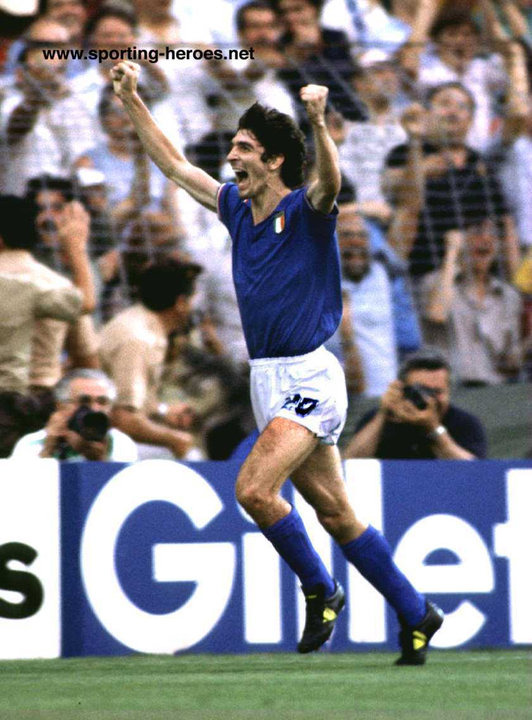
Paoli Rossi missed out on the 1980 European Championships serving a suspension for his role in a betting scandal. He returned at the end of the 1981/82 season for his club Juventus just in time to earn a call-up to the Italian squad for the 1982 World Cup in Spain. Rossi was heavily criticised for his performances in the first group phase, where he failed to score as a lacklustre Italy drew all 3 games against Poland, Peru and Cameroon, qualifying in second place above Cameroon by nature of having scored 1 more goal.
Pressure was put on manager Enzo Bearzot to take Rossi out of the starting line-up for the second group phase, but the coach staunchly defended Rossi and kept faith in him. After a 2-1 win over Argentina, Rossi burst into life in the match against Brazil, scoring a hattrick against the tournament favourites. With the 3-2 win, Italy confirmed their place in the semi-finals, and the Brazil team of '82 were confined to their role as the best team to never win the World Cup, a title they still hold to this day.
In the semi-finals Italy beat Poland 2-0 with Rossi scoring both goals to set up a final meeting with West Germany. Rossi gave Italy the lead in the 57th minute, in a match they would go on to win 3-1. After failing to net in his first 4 World Cup games and receiving huge criticism, Rossi had netted 6 goals in 3 games and to this day remains the only European to win the World Cup, the Golden Boot and the Golden Ball at the same tournament. Later that year he was awarded the Balon D'or for his huge role in making Italy champions of the world for the first time since 1938.
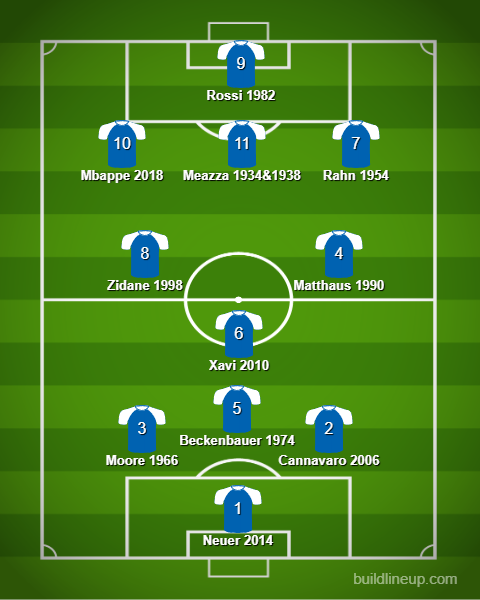
South America XI
GK- Emiliano Martinez- Argentina 2022
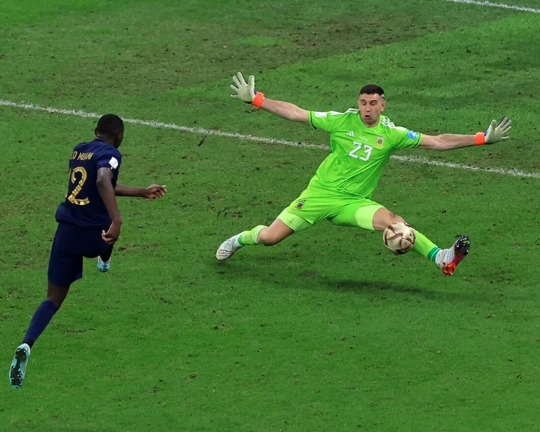
Emiliano 'Emi' Martinez made an immediate impact for Argentina helping them end their 28-year wait to become Kings of South America again. Just months after making his international debut, he quickly became a hero with penalty shoot-out heroics in the semis against Colombia before keeping a cleansheet in the final against Brazil.
There was hopes he would have a similar transformative effect at the World Cup as the Albiceleste looked to end their 36-year wait to win the greatest prize in Football once again. This bid got off to the worst imaginable start when Argentina were stunned by Saudi Arabia in one of the biggest World Cup shocks of recent times with the 2-1 defeat ending Argentina's 35-match unbeaten streak they had taken into the tournament.
Argentina may have wobbled but they steadied themselves with back-to-back 2-0 victories over Mexico and Poland. In the round of 16 against Australia they appeared fully in control and heading towards another 2-0 win when a wicked deflection resulted in a Enzo Fernandez own goal that left Martinez routed to the spot. This raised the spirits of Australia considerably and they pushed for an unlikely equaliser. In the end Martinez was called into action to deny Kuol with a spread eagle save with 30 seconds of injury time left to play. Martinez collapsed gratefully onto the ball, with his defenders collapsing with relief and gratitude on top of him.
Argentina again led 2-0 in the quarters against the Netherlands when Martinez was beaten from a Weghorst header. Once more Argentina had appeared in complete control, but it was becoming clear they weren't going to lift this trophy without incurring a lot of drama on the way. However what followed in the 11th minute of injury time was on another level as a cleverly worked free-kick alllowed Weghorst his second. With Argentina expecting a shot from just outside the D, Koopmeiners instead slipped a pass into Weghorst who was able to make enough room to smuggle the shot past Martinez.
With no winner found in extra-time, the game went through to penalties. Martinez quickly calmed Argentina nerves by saving the first two Dutch penalties, diving to his right to deny Van Dijk before saving from Berghuis with a dive to his left. Fernandez was unable to take the chance to send Argentina through which made for another round of penalties, but Lautaro Martinez did take the chance to send them through 4-3. There was no doubt who the true hero of the shootout had been though, Lautaro's namesake in the Argentina goal, with the abiding memory of the shootout being his back-to-back saves with exuberant dancing coming between and after.
The semi-finals produced Argentina's most straightforward game of the tournament, as they produced their best match thus far to beat Croatia 3-0 in a match Martinez had very little to do in. Then came the World Cup Final against France, and for the 6th match in a row Argentina took a 2-0 lead. However a mistake from Otamendi allowed France to half the deficit from the penalty spot and seconds after the restart, Mbappe shocked the world by adding his second with a volley past Martinez.
Like against the Netherlands, Argentina had full control then squandered it. They recovered in extra-time to retake the lead but a second penalty was awarded to France, this time for handball, and again Mbappe held his nerve to become the first man to score a World Cup Final hattrick since Geoff Hurst in 1966.
The climax of extra-time was one of the most enthralling in World Cup history. In the 123rd minute, with 20 seconds of injury time remaining, a long ball punted up was missed by the Argentina defence leaving Kolo Muani clean through against Martinez. The ball set up perfectly for him to connect with power but Martinez was equal to the shot, making himself as big as possible with the ball cannoning off his left leg. The goalbound shot would surely have meant France retained their World Cup, with the save from Martinez quickly achieving the status of one of the most legendary saves in Football history. That wasn't the end to the drama as Argentina went straight down the other end and forced a chance of their own, with Lautaro missing the target.
So for a second time, Argentina would go into a penalty shootout and for a third time Mbappe was able to convert past Martinez, whose penalty shootout powers seemed not to work on the superstar. However they still would work on Coman who took France's second penalty, as Martinez guessed right to deny him before whipping up the Argentina fans all around by pumping his fist. Tchouameni followed and Martinez' intimidating and distracting presence in goal again worked, with the French midfielder missing the target all together. Martinez responded with his shoulder bouncing dance which would go viral in the aftermath. Argentina continued to hold their nerve and with 4 successful spotkicks out of 4, became 'Campeones Del Mundo' for the 3rd time.
The deciding factor in the shootout had again been Martinez, with his confident and charismatic presence in goal inspiring belief in his teammates. It was a given he would pick up the award for best goalkeeper at the tournament, with one of the most memorable displays from a keeper in the history of the World Cup. In terms of level of impact on winning the 2022 World Cup, Martinez was behind only Lionel Messi, and therefore there is no question that he must have a place in this side.
Def- Jose Nasazzi- Uruguay 1930
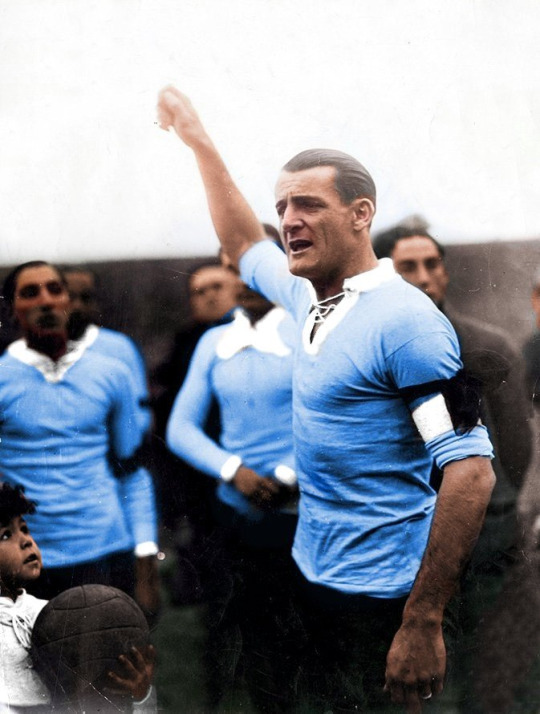
The inaugural FIFA World Cup was hosted by Uruguay and featured 13 teams, with 7 from South America and only 4 from Europe braving the long journey via boat to take part. Uruguay had been the dominant force of the 1920's and their captain Jose Nasazzi had been an integral part in defence, helping La Celeste to win back-to-back Olympic golds in 1924 and 1928, aswell as three South American championships.
In a three-team group, Uruguay advanced with wins over Peru and Romania, keeping two cleansheets and scoring 5 goals. Both semi-finals would end 6-1, with Argentina thumping USA before Uruguay matched the result against Yugoslavia, coming back from conceding an early goal. This set-up an all-South American final in Montevideo to decide the first ever World Cup winners. Uruguay took the lead but found themselves trailing at the break, but roared back in the second half to eventually come out 4-2 winners.
Known as 'El Gran Mariscal' ("The Great Marshal), Nasazzi became the first player to lift the Jules Rimet trophy as captain. Though the Golden Ball award did not come into being until 1982, the book 'World Cup: A statistical summary' identified Nasazzi as the best player of the tournament as did most big media outlets at the time such as Clarin newspaper, which is an impressive feat for a defender.
Def- Aldair- Brazil 1994
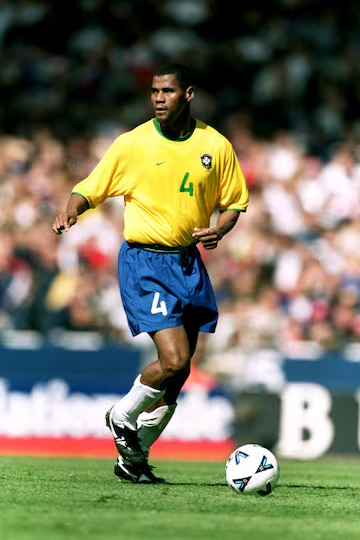
After winning 3 World Cups out of 4 between 1958 and 1970, Brazil had established themselves as the greatest international team of them all and in doing so they got to keep the original Jules Rimet Trophy. However since then they had failed to even reach the final in the next 5 editions and going into the 1994 World Cup they were verging on 24 years without winning the most coveted prize in Football.
After progressing through the groups with 6 goals and only 1 conceded, Brazil knocked out hosts USA by a goal to nil to set up a blockbuster Quarter-Final with the Netherlands. The game didn't disappoint with the Dutch hauling back a two-goal deficit to equalise before Branco scored the decisive goal for Brazil. In the semi-finals one Romario goal was enough to progress them past Sweden and into the showpiece match. The final against Italy saw Brazil keep a 5th cleansheet of the tournament as for the first time ever a World Cup Final finished 0-0 and progressed to a penalty shootout, where 3 Italians would miss to give Brazil their 4th World Cup.
This win had been different from Brazil's wins of the past as rather than free-flowing attacking football from an attack made up of superstars, this effort was built more on defensive solidity whilst relying on the world's best striker Romario to deliver at the other end. And deliver he did with 5 goals winning him the Golden Ball. However with the South America XI stacked with offensive talent and shorter on defensive quality, Aldair is my pick from Brazil's 1994 winning side.
The AS Roma legend did not even make the squad initially before the illness of Carlos Mozer led to his callup. Aldair also began the campaign on the bench but was subbed on in the opening game against Russia. From there he maintained his place in the starting line-up and his partnership with Marcio Santos was a key component in Brazil only conceding 3 goals in 7 games.
Aldair's quietly efficient style with him being clean and composed in his defensive work whilst keeping a cool head were traits needed in the round of 16 tie with USA. In front of a passionate US crowd, the underdogs sensed the ultimate upset when Brazil were sent down to 10 men whilst still in the first half with the game tied at 0-0. Aldair remained unruffled however and this game ended up being the first of three cleansheets out of four knockout games for Brazil, with only the Netherlands able to penetrate their defence. Aldair and partner Santos faced up against Roberto Baggio and Daniele Massaro in the final at the Rose Bowl. Baggio in particular had come into the final on a hot streak of form, but the Brazil defence was able to contain him.
This was perhaps the strongest defence Brazil has ever fielded at a World Cup and Aldair was a key, yet slightly underrated part of it. He gets the nod for selection in this side over other defenders due to the way he went from being left out of the squad entirely, to making the bench, to quickly becoming one of the key pillars in the Brazil team that ended their 24-year wait in the relative World Cup wilderness- finally getting their hands on the golden, post-1970 version of the World Cup trophy for the first time. This was a classic case of circumstances giving a player an opportunity to shine and him grabbing it with both hands.
Def- Daniel Passarella- Argentina 1978
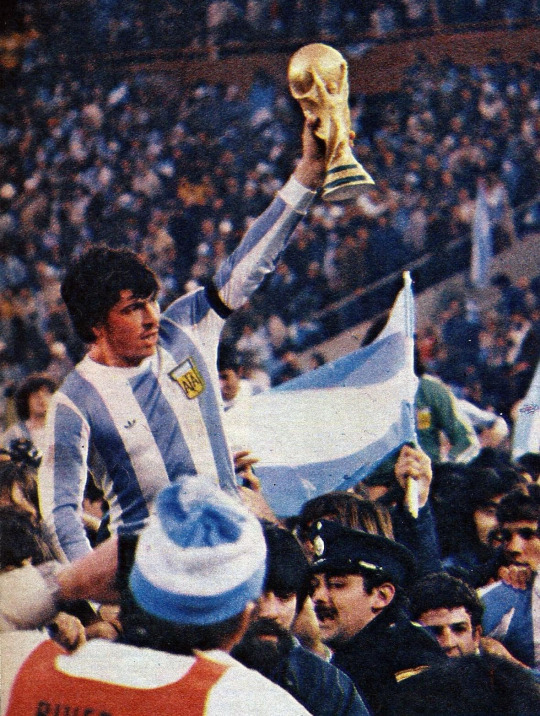
The 1978 World Cup in Argentina would be the most controversial sporting event since the Berlin Olympics of 1936, with the Military Junta of Argentina seizing power in a coup 2 years earlier and now looking to use their hosting of the World Cup to strengthen their regime. For the tournament to be a success for them, Argentina had to win the World Cup for the first time and nothing less would do.
This brutal regime would disappear and torture tens of thousands of dissidents during its 7-year reign as Argentina striker Leopoldo Luque knew only too well. After his late goal had ensured a come from behind 2-1 victory in the opening match against Group 1's least-fancied side Hungary, one junta official remarked to him with a smile that "this could turn out to be the group of death as far as you are concerned." The meaning of these words wouldn't have been lost on him, given a close friend's brother had disappeared earlier that very day. "His body was later found by villagers on the banks of the River Plate with concrete attached to his legs. At that time, opponents of the regime were sometimes thrown out of aeroplanes into the sea."
Another 2-1 win in the next match against France secured Argentina's progression through before a 1-0 defeat in the final match against Italy which actually worked in their favour, as instead of sending them to a group with the two finalists of the previous World Cup: West Germany and the Netherlands (aswell as Austria who had topped a group with Brazil) defeat meant they would instead be grouped with Poland, Brazil and Peru.
Argentina beat Poland 2-0, then drew 0-0 with Brazil. Brazil beat Peru 3-0 and then Poland 3-1, meaning Argentina would have to beat Peru by at least 4 clear goals to reach the final. They knew this as they would play after Brazil, with Argentina's groups in both the first and second phase being the only group's in which both final group matches didn't kick off at the same time, giving the hosts a clear advantage.
They made use of this advantage by beating Peru 6-0 in one of the most controversial games in World Cup history. Peru had topped the first group phase over the eventual finalists Netherlands and held them to a 0-0 draw, however going into this game they were already out of the tournament and could not qualify for the 3rd place game after two defeats. There are many rumoured stories of dodgy deals involving prisoner releases, large grain shipments, the unfreezing of bank accounts, all in exchange for ensuring a result that would send Argentina through to the final. One thing that is known for certain is prior to kickoff, Peru were visited in their dressing room by the Argentine President Jorge Videla who reminded the Peruvians of the "brotherhood" the two countries shared.
In the final against the Netherlands, two extra-time goals from golden boot winner Kempes and Bertoni gave Argentina a 3-1 win in a game famous for the blue and white ticker tape that littered the Buenos Aires turf. The first Argentine to lift the World Cup was 25-year old Daniel Passarella, at the time the youngest captain to win the tournament. Passarella was known as a tough-tackling hardman, making up for his lack of height at centre-back with his ferocity. A leader of men due to his organisational skills, he remained much more than just a tough guy. His quality in possession allowed him to thrive in the sweeper role, stepping into midfield with a freedom to roam. In this highly pressurised environment of trying to lift a country in turmoil by winning the World Cup on home soil, Passarella proved himself the perfect leader for the moment.
CM- Obdulio Varela- Uruguay 1950
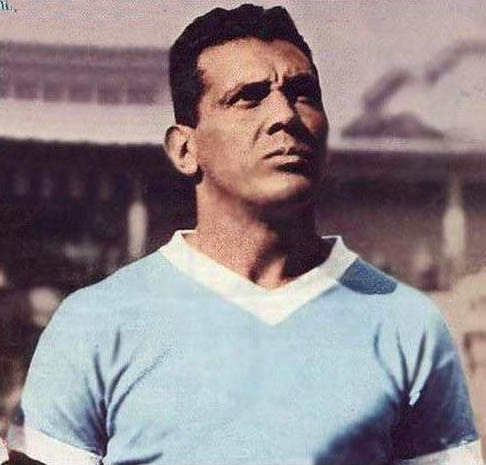
20 years on from the inaugural edition, the World Cup returned to South America for a second time with this being the first time the tournament was held for 12 years, the Second World War meaning both 1940's tournaments were cancelled. 16 teams initially qualified for the competition but Scotland, France and India would pull out taking the tournament down to 13 teams, just like in 1930. The withdrawals made for a messy 4-team group stage, with 2 groups having 4 teams, 1 group having 3 teams and Group 4 containing just Uruguay and Bolivia.
Group winners would qualify for the final round group, so all Uruguay had to do was beat Bolivia, which they did by 8 goals to 0. The final group was between 2 South Americans, Uruguay and hosts Brazil, and 2 Europeans Spain and Sweden. Uruguay drew 2-2 with Spain then came from behind to Sweden 3-2. Brazil meanwhile destroyed Sweden and Spain 7-1 and 6-1 respectively.
Due to the format, this was the only World Cup ever played without an official final, in that going into the match both teams didn't need to beat the other in order to become World Champion. By virtue of having 1 point more than Uruguay in the group, Brazil needed only to avoid defeat, with Uruguay needing to win to overtake Brazil in the table.
Given the ease in which Brazil had dispatched Spain and Sweden, and that Uruguay had struggled against the same opposition, most of the 173,850 people officially in attendance (with some claims it was infact over 200,000) at the Maracana came to the stadium already in party mode, so certain were they Brazil would be crowned World Champions. Their confidence seemed to be vindicated when Friaca gave the hosts the lead in the 47th minute.
At this point Uruguay captain Obdulio Varela slowed down the restart, arguing with the referee about the goal, knowing it wouldn't be disallowed but looking to secure his team as much time as possible to clear their heads and refocus, whilst also settling the raucous crowd down somewhat. Varela then shouted to his teammates: "Now, it's time to win!"
In the 66th minute Schiaffino equalised and then with a little over 10 minutes remaining Ghiggia completed the comeback to give Uruguay the lead they needed. La Celeste held on and the result would forever be known as Maracanazo ('The Maracana smash'), the shock result which produced a deafening silence at full-time, undoubtedly the quietest a group of 100,000+ Brazilians has ever been rendered.
Varela's role in quelling Brazil from building on the momentum of their goal by deliberately delaying the restart is part of Uruguayan folklore and his calculated thinking under severe pressure one of the reasons he is regarded as Uruguay's greatest ever captain. Playing in defensive midfield, Varela was an inspirational leader to his teammates, a great motivator whilst anchoring the midfield with aggressive tackling, tactical awareness and football intelligence. ESPN Deportes and Clarin Newspaper both considered him the best player of the 1950 World Cup.
CM- Didi- Brazil 1958
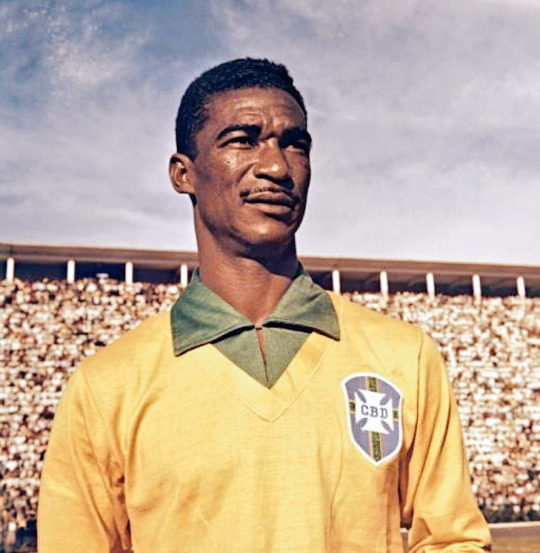
In 1958, Brazil became the first team to win the World Cup on a different continent to their own. They topped the group with two wins against Austria and Soviet Union, either side of a 0-0 draw with England to set up a Quarter-Final with Wales, which they won 1-0 thanks to the first World Cup goal of Pele. They conceded for the first time at the tournament in the semis against France, but these ended up being mere consolations as Brazil won 5-2, with Didi getting on the scoresheet.
Brazil went 1-0 down early in the final against Sweden but came back to record another 5-2 win as they dominated to win the World Cup for the very first time. A 17-year old Pele had attracted most of the headlines but it was Didi who was named the best player of the tournament by "World Cup: A Statistical Summary". The technical leader of the side, Didi connected the team, often the bridge between defence and attack, looking to feed Pele and Garrincha the ball in dangerous positions as often as possible. His accuracy when playing long and short passes made him a key player in Brazil's World Cup win.
An elegant midfielder, Didi operated as a sort of deep-lying playmaker, helping set Brazil's tempo and his displays drew the attention of Real Madrid, who signed him the following year.
AM- Lionel Messi- Argentina 2022
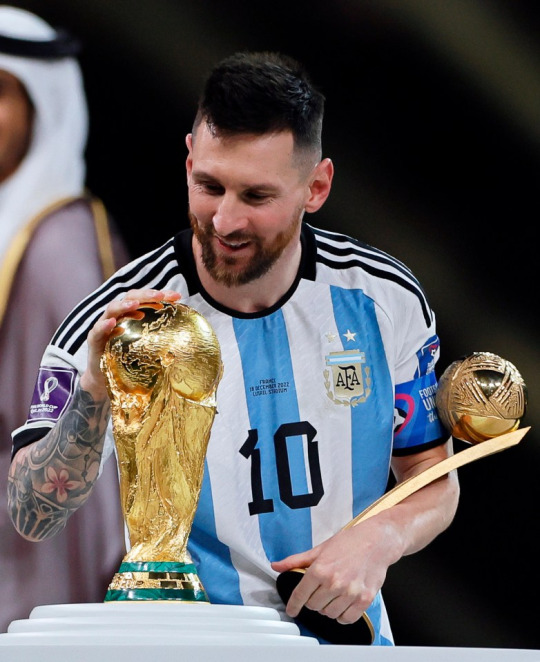
Lionel Messi had won Balon D'ors galore, endless trophies with Barcelona in the greatest club career the game has ever seen but he had not, as he was constantly reminded, won a senior trophy with Argentina. He had won the U-20 World Cup and an Olympic Gold Medal with the U-23s producing exceptional campaigns, suggesting it would be only a matter of time before he won with the first team.
However, Argentina and Messi would fall short in finals in 3 successive years, first losing the 2014 World Cup final to Germany with Messi missing a big chance at 0-0, before back-to-back penalty shootout losses to Chile, with Messi missing in the 2016 shootout. This moment, which meant he had now lost all 4 of his senior international finals going back to a 2007 Copa America defeat to Brazil, pushed Messi over the edge as he announced his international retirement, convinced it just wasn't meant to be for him with Argentina.
The Argentine public had struggled to embrace Messi throughout his career, they wanted a flawed genius like Maradona had been, with vices that the everyday man could relate to. A man who played with too much passion was better than one who played with none atall, which is how some viewed Messi, due to his non-singing of the national anthem at times. But in the aftermath of the 2016 Copa America final, the nation rallied behind Messi, asking him to reverse his retirement decision. Among those posting supportive messages were future manager Lionel Scaloni and future teammate Enzo Fernandez, then a 15-year old.
The return wasn't an immediately triumphant one as a round of 16 World Cup exit and semi-final defeat in the Copa America immediately followed. But the appointment of Scaloni as manager would change everything and in 2021 Messi finally won a trophy with the senior team, being absolutely influential as Argentina's 28-year wait for an honour came to an end at the Copa America. This would be part of a 36-match unbeaten streak which Argentina took into the 2022 World Cup in Qatar, the first ever mid-season World Cup.
A soft penalty aided Messi in getting Argentina off to the ideal start, but they were then stunned in one of the biggest World Cup shocks of recent times with Saudi Arabia coming from behind to win 2-1. In the next match against Mexico, Argentina's hopes hung by a thread. All the confidence they had began the tournament with was draining out of the players, every passing minute in which they failed to score or even threaten the Mexican goal.
Then in the 64th minute, a moment that would lead to the altering of history. Messi for the first time found space 20 yards from goal and after setting himself with a touch fired a low unstoppable shot into the bottom corner. Given the circumstances it may have been the best, most important goal of his legendary career. A great goal from Fernandez late on further steadied Argentine nerves.
They may have briefly wobbled again, when Messi (wearing Argentina's purple away kit for the only time at the tournament) missed the chance to convert a soft penalty he'd won, denied by Szczesny. But Messi responded with a great playmaking display, opening the game up from deep with long, accurate and often penetrating passes, aiding Argentina to a 2-0 win which secured top spot.
The round of 16 against Australia was vintage Messi. In his 1,000th senior game, he opened the scoring with what was his first ever goal in the World Cup knockout stages. In the second half Messi toyed with Australia, it was perhaps the most confident, most relaxed he'd ever played at the World Cup. It had taken a long time but this was the Messi who had tortured La Liga and Champions League defences week in, week out for years. Endlessly inventive and daring he should have finished with a couple of assists but for the poor finishing of Lautaro Martinez, but Argentina advanced 2-1 to face the Netherlands.
A tight and tense game was opened up by Messi in the 35th minute as he produced the pass of the tournament. Messi threaded a ball through the eye of a needle, through the legs of Ake more specifically, at the exact second the pass needed to go in order to meet the run of Molina, which Messi had somehow spotted and the full-back produced the finishing touch the move deserved. Messi added what appeared to be the decisive blow from the penalty spot, but the Dutch would respond in the craziest and worst-tempered game of the tournament which somehow ended 11 v 11, despite being referred to as the "Battle of Lusail".
Argentina lived to fight another day surviving the shootout and met Croatia in the semis. Messi opened the scoring from the spot before Alvarez doubled the lead 5 minutes later. In the second half, Messi produced another contender for assist of the tournament, only rivalled by his own in the previous match. Messi received the ball on the touchline not far inside the Croatia half then dribbled the ball up to the Croatian box, Gvardiol caught up to him and attempted to slow him down, but Messi swivelled away leaving Gvardiol in his wake once more, reached the byline and pulled it back for Alvarez to deliver a simple tap-in.
Messi was locked in. Rather than feeling the weight of the pressure, he was embracing it, using it to push himself further. In the World Cup Final against France, Messi held his nerve from the penalty spot to put his team in front. He then played a role in the best team goal in a World Cup final since Carlos Alberto for Brazil in 1970, with this brilliant move finished by Di Maria after perfectly weighted passes from Messi, Alvarez and Mac Allister in the build-up.
Argentina had outclassed France in every department and with just 10 minutes to go, the trophy seemed secure. However two Mbappe goals in two minutes changed everything, levelling things up against all odds. Mbappe was now frightening the life out of the Argentine defence every time he had the ball, but Messi ensured Argentina maintained danger of their own, using the ball to excellent effect every time he had it. In the 108th minute, he produced a fairytale moment, scoring what appeared likely to be the winning goal. Lloris denied Martinez but his parry fell to Messi who scrambled the ball over the line. But there was another sting in the tail as Mbappe scored a hattrick with his second from the spot to send the game to penalties.
As he had done for his in-game penalty, Messi calmly rolled the ball into the net, as casually as if playing in the garden with his kids. Argentina would win 4-2 on penalties to become champions of the world for the first time in 36 years. They also ended South America's 20-year wait for another champion after Europe had won the last 4 editions. At 35-years old, Messi had played every single minute of the team's campaign and either scored or assisted 7 of Argentina's 10 knockout stage goals. Under more pressure than any player in history to deliver the World Cup for his nation, Messi had done so with one of the most impressive and memorable campaigns from any individual in World Cup history, becoming the first player ever to win the Golden Ball award twice.
AM- Diego Maradona- Argentina 1986
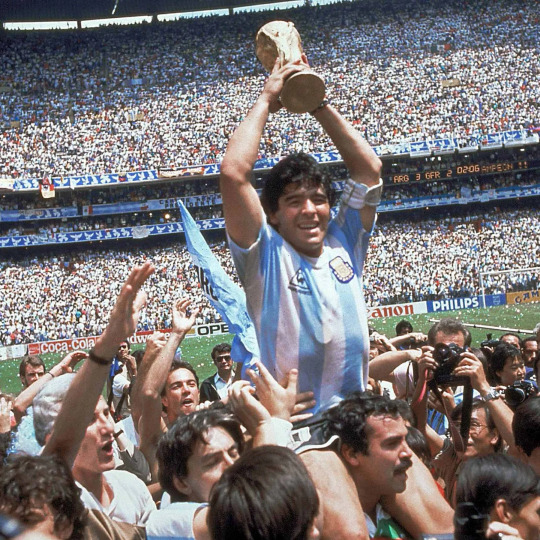
As a 17-year old Diego Maradona missed out on making the squad for the 1978 World Cup which Argentina won on home soil. Instead he went to the World Youth Championships (now the U-20 World Cup) the following year and wowed those in attendance with 6 goals in 6 games to lead his side to the trophy. His nation hoped he could do the same for the senior team at his first World Cup in 1982, but the experience was a frustrating one for Maradona. He scored in just 1 of Argentina's 5 matches and in their final match against Brazil where the Albiceleste were knocked out of the competition, Maradona's frustration got the better of him. He had been a victim of rough treatment throughout and with little protection from the officials against Brazil, he lashed out and saw red.
Maradona was made captain for the 1986 World Cup in Mexico and the immediate signs were this was going to be a much more fruitful campaign for him, as he assisted all 3 Argentina goals in their opening win against South Korea. Maradona started in scintillating form and he remained at that level for the rest of the tournament. He scored his first goal of the World Cup in a 1-1 draw against Italy before adding another assist with a cross for Burruchaga in a 2-0 win over Bulgaria which secured top spot.
In the round of 16, a scrappy goal from Pasculli was enough to get Argentina past Uruguay and set up a Quarter-Final against England. With defeat in the Falklands War still a sore topic for the Argentine people, a desire to beat England on the football pitch and restore national pride gave Argentina even more desire to reach the semi-finals. None felt this *need* to win more than Maradona, who on a stiflingly hot day in Mexico City would score what will surely now always remain (given the introduction of VAR) the most infamous brace in football history.
After dribbling through the heart of England, Maradona attempted a one-two with Valdano, continuing his move into the box hoping for the return. Instead a poor touch from Valdano allowed Hodge to attempt to clear for England. His attempted clearance went back towards Shilton, with this of course in the days when goalkeepers could still handle the ball following a touch from their own team. Shilton went out to punch the ball clear but instead was beaten the punch, quite literally, by the 5 foot 5 Maradona who jumped up with his arm raised above his head and with that arm directed the ball into the back of the net. The handball was inexplicably missed by both the linesman and referee, with Maradona saying after the game that the goal had been scored by "a little bit the head of Maradona and a little with the hand of God."
4 minutes later Maradona showed the feet of a footballing god when he picked the ball up inside his own half, pirouetted away from two England shirts, then dribbled past a further two England defenders before rounding Shilton and finishing into the empty net. The goal remains the greatest solo goal in World Cup history and the contrast of the two goals led L'Equipe to refer to Maradona as "half-angel, half-devil". 3 days later in the semis against Belgium, Maradona opened the scoring in the exact minute as his hand of God goal, before adding his second with another solo masterpiece. Maradona weaved inside the Belgian defence before reaching the penalty area and finding room for the clinical shot.
Maradona was double-marked in the final and kept more subdued than he had been in previous matches, but Argentina managed to lead 2-0 regardless through Brown and Valdano. However two quick-fire goals from West Germany saw the game levelled up, but only for 3 minutes as Maradona, while still closely attended to by two opposition players, was able to knock through a first-time pass for Burruchaga to send him clean through on goal and the midfielder seized his moment brilliantly to give Maradona the match-winning assist and Argentina their second World Cup trophy.
Maradona had either scored or assisted 10 of Argentina's 14 goals at the World Cup, the captain had been inspirational with his individual genius and ability to bring the best out of his competent but more limited teammates. The 1986 World Cup will forever be associated with Maradona's virtuoso showing, with him playing at a level perhaps nobody had before reached, with Maradona being at his brilliant best consistently throughout the tournament.
Wing- Garrincha Brazil 1962
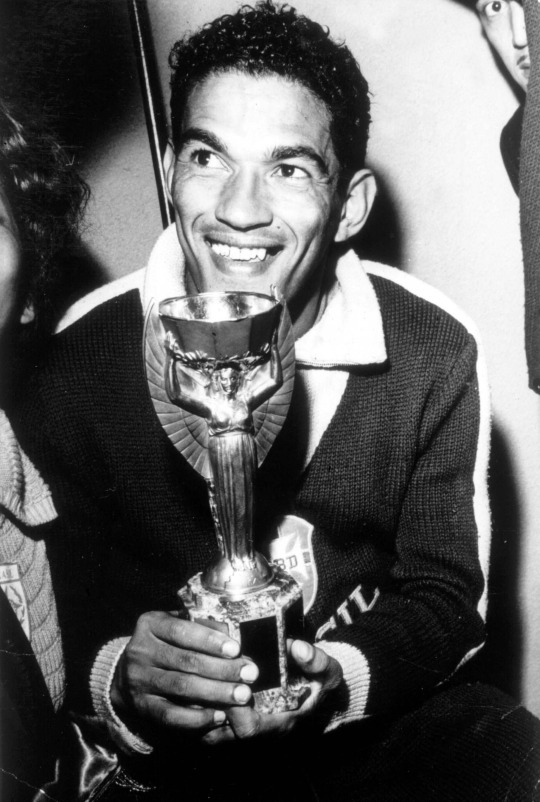
Garrincha was part of the 1958 Brazil team that won the World Cup in Sweden, but it is for the 1962 World Cup in Chile he is best remembered. After a 2-0 win against Mexico, the world's best player Pele picked up an injury against Czechoslovakia which would rule him out for the rest of the tournament. However in his absence a prime 28-year old Garrincha would ensure Brazil wouldn't miss a beat.
A 2-1 win over Spain thanks to a brilliant Garrincha assist for the winning goal secured top spot and set up a quarter-final appointment with England. Garrincha would steal the show, scoring twice and having a hand in the other as Brazil ran out 3-1 winners. Garrincha's 2nd goal came from a curved shot from outside the box which flew into the top corner. So enchanted were the British press with Garrincha's display that one reporter said he was "Stanley Matthews, Tom Finney and a snake charmer all rolled into one." The only thing that could momentarily put a halt to Garrincha's brilliance was when a stray dog ran onto the field, with the wing wizard reportedly winning the dog in a raffle afterwards.
In the semi-final against hosts Chile, Garrincha scored another brace in a 4-2 win, but was sent off with around 5 minutes left to play after losing his temper at persistent fouling from the Chileans, attempting anything to stop him. The bad-tempered game led to unpleasant scenes from the stands as angry Chile fans launched missiles at the Brazil team, with one hitting and cutting Garrincha.
The red card should have meant Garrincha would be ruled out for the final against Czechoslovakia, but the Brazilian FA reportedly went to extreme lengths to avoid this. With a disciplinary committee meeting at FIFA to decide Garrincha's fate, testimony from the Peruvian ref and Uruguayan linesman would be essential in deciding the outcome.
After a phone call from his country's president the referee downplayed the nature of Garrincha's offence, and the linesman, who had advised the ref to show red in the first place did not attend the meeting, with a Brazilian football journalist saying: "he just disappeared, and nobody knew where he'd gone." Brazilian football referee John Etzel would claim he was given $10,000 to pass onto the linesman, in exchange for his non-testimony. Reportedly he gave him just half of that and kept the rest for himself, but it was enough and Garrincha would be on the teamsheet for the final.
However after all that, Garrincha would have a muted performance in the final, suffering with a severe fever. Nevertheless Brazil would come from a goal behind to beat Czechoslovakia 3-1. Garrincha was considered by all to be the player of the tournament and when you think of the 1962 World Cup you think of Garrincha, and vice versa. His quick, dazzling feet had entertained the watching world, and somehow he had been able to replicate the magic of Pele in order to maintain Brazil's position as being in a separate league to the rest of the world for the second successive World Cup.
Attack- Pele- Brazil 1970
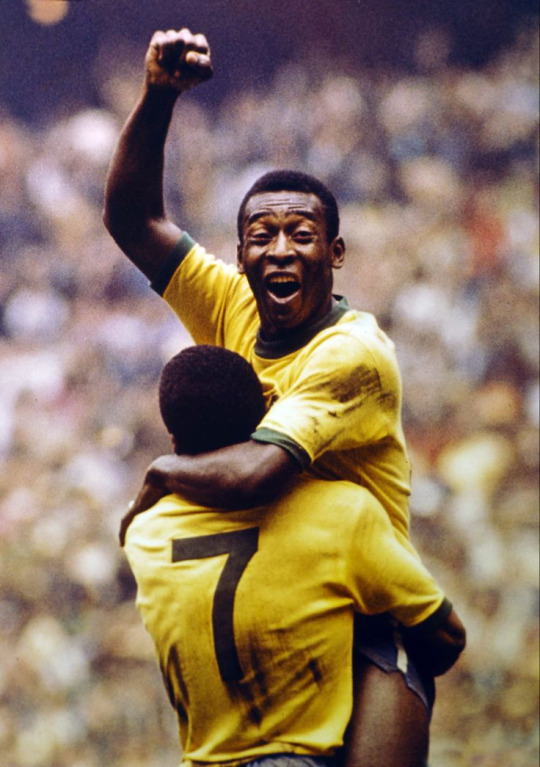
Aged just 17 Pele became the youngest player to win the World Cup in 1958, a record which still stands to this day. He lit up the tournament, scoring 5 goals including a hattrick in the semi-finals against France and a brace in the final against Sweden, with Brazil winning both games 5-2. Since then Pele had gone onto have the greatest career football had ever seen up to that point, but he had been denied the chance to again dominate a World Cup as he once had as a mere teenager.
In 1962, after scoring and assisting in the opening game Pele picked up an injury in the next match which would rule him for the rest of the tournament that his teammates would go on to win without him. 4 years later in 1966, Pele again scored in the opening game but was then kicked out of the tournament by overly physical defenders and he aswell as his teammates would limp out at the group stage.
Now at the 1970 edition in Mexico, Pele had his final chance to show his brilliance to the entire world, who for the very first time could watch the game live in colour, rather than black and white. Pele wasted no time in getting to work, scoring in the opening game against Czechoslovakia, a 4-1 win in which he came close to scoring from inside his own half, with an effort that caught out the unsuspecting keeper but fell just the wrong side of the post. Pele's goal came from a long, clipped pass into the box which he took down expertly on his chest before putting his laces through the ball to send it home.
In the next match against defending champions England, Pele was close to getting on the scoresheet again but his powerful header was denied by Banks, who produced one of the greatest saves of all time. Pele who had leapt up impressively, could scarcely believe his eyes when Banks somehow got down to his effort and generated enough power to lift it safely over the bar. Brazil could not be denied indefinitely however and Pele set up the game's only goal with a nice control and lay-off for Jairzinho.
Brazil continued their 100% record with a 3-2 victory over Romania, with Pele netting a brace, including a powerful free-kick through the Romanian wall. In the quarter-finals Brazil beat Peru 4-2, with Pele assisting the third. This set up a semi-final against more South American opposition, this time in the shape of Uruguay. Pele again assisted the third goal to help Brazil to a 3-1 win but is best remembered for an ingenius dummy where he let the ball run past the keeper without touching it and ran to meet it on the other side. The fact Pele failed to complete the move by adding the finishing touch of a goal was immaterial.
In the final at the Estadio Azteca Brazil would face Italy, who had come through their semi-final 4-3 against West Germany in one of the great World Cup matches. However in the final they were no match for Brazil, with Pele scoring the opening goal with what happened to be Brazil's 100th World Cup goal. Pele easily outjumped his marker to head powerfully past the keeper and the ensuing celebration of a jubilant Pele in the arms of teammate Jairzinho produced one of the iconic sporting images.
Italy equalised but never felt truly in the game, Brazil re-took the lead in the 66th minute with a Gerson strike from outside the box. Jairzinho added a third 5 minutes later before the icing was put on the cake with minutes remaining with one of the most iconic team goals of all time. After a build-up in which Brazil displayed both their exceptional teamplay and aswell their individual quality on the ball, the ball found its way to Pele who attracted the attention of every Italy player in the vicinity before rolling the ball into the path of a onrushing Carlos Alberto to strike it. His shot is lethal and the goal is a perfect one to demonstrate the superiority of this Brazil team compared to all their foes.
Long considered the greatest World Cup team ever, the Brazil of 1970 were blessed with incredible stars such as captain Carlos Alberto and an attack including Jairzinho, Tostao and Rivellino. But the iconic 10, Pele remained the jewel in the crown, scoring or assisting 53% of Brazil's 19 goals at the tournament. Burgnich, the Italian defender tasked with marking Pele in the final was quoted as saying afterwards: "I told myself before the game, he's made of skin and bones just like everyone else – but I was wrong".
Attack- Ronaldo Nazario- Brazil 2002
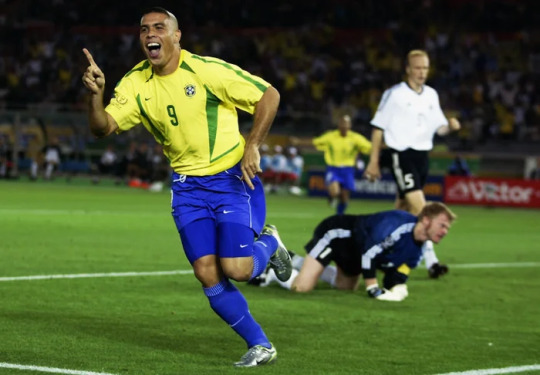
Ronaldo was an unused squad player in the 1994 World Cup win but after establishing himself as the best and most exciting young player in the world in the years that followed, expectations were sky high for him at the 1998 World Cup. He didn't disappoint, either scoring or assisting half of Brazil's 14 goals on the way to the Final. However, Ronaldo suffered a nervous seizure on the eve of the game and should not have played, with supposed pressure from Nike the reason he had to start the game, a 3-0 defeat with Ronaldo looking and playing like a ghost.
Given he was just 21 years old at the time, many expected he would have plenty more chances in the future. However in the years after, Ronaldo suffered knee injuries so horrifically severe he was on the verge of being forced into retiring. Having played just 24 matches combined for his club side Inter Milan over the past 3 seasons, Ronaldo returned to fitness just in time for the first jointly hosted World Cup, with Japan and South Korea sharing the responsibility.
In the opening game against Turkey, Ronaldo netted the equaliser on the way to a 2-1 victory courtesy of a late penalty. 'R9' then added Brazil's 4th en route to a 4-0 win over tournament debutants China, before setting the Selecao on their way to a 5-2 win against Costa Rica with an early brace. In the round of 16 against Belgium, Ronaldo made sure of his nations progression, adding a late 2nd in a 2-0 victory to set up a Quarter-Final clash with England.
This would be the only game across the tournament that Ronaldo failed to score in, with the other 2 R's from Brazil's formidable forward line, Rivaldo and Ronaldinho, scoring the goals as Brazil came from behind to progress 2-1. "O Fenômeno" was back on the scoresheet in the semi-finals as Brazil beat Turkey for a second time at the finals, this time by a solitary goal to nil.
This gave Ronaldo the opportunity to exercise the demons of 4 years earlier as he had another shot at a World Cup final with Germany this time the opposition. The opening goal came in the 67th minute and it would be Ronaldo's as he was quickest to react to Oliver Khan spilling Rivaldo's effort from distance. Rivaldo was again involved 12 minutes later as his clever dummy afforced Ronaldo time to take a touch before giving Khan no chance with the well placed finish. With that Ronaldo had achieved the ultimate redemption, from the pain of 1998 and the injury hell that followed, he had won the World Cup golden boot with 8 goals but more importantly had won his country the World Cup with a brace in the Final.
Ronaldo's perseverance in the way of adversity and the way in which his immense talent had rewarded him the ultimate prize despite the obstacles faced made it one of the great comebacks in Football history.
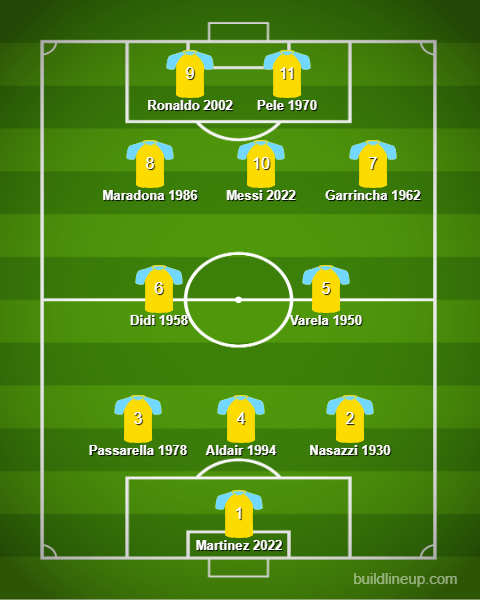
0 notes
Text
The World’s Highest-Paid Athletes in 2025: Money, Fame, and the Stories Behind the Numbers
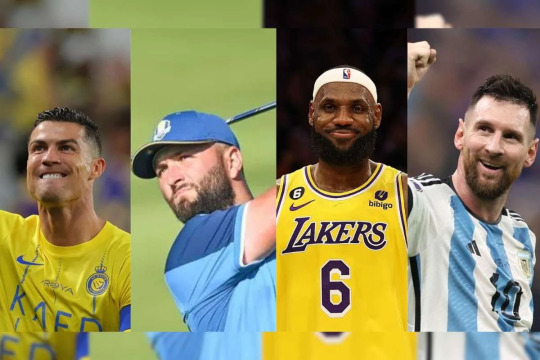
Source: indianexpress.com
Every year, a select group of elite athletes earns not only medals and accolades but staggering sums of money that can rival Fortune 500 CEOs. These highest-paid athletes aren’t just players on the field, they are global icons, business moguls, philanthropists, and symbols of excellence in their respective sports. But behind the headlines and eye-popping paychecks are stories of grit, ambition, and savvy decision-making that propelled them to the top not just in performance, but in paycheck.
As we explore the lives and incomes of today’s highest-paid athletes, we find that the numbers tell just one part of the story. The real intrigue lies in how they got there and what they do with their fame and fortune.
The Business of Sports: More Than Just Games
It’s easy to assume that athletes earn the bulk of their income from contracts and competitions. While that’s true to an extent, the game has evolved. Today, endorsements, business ventures, media deals, and even social media influence play a massive role in shaping the earnings of the highest-paid athletes.
Take Lionel Messi, for example. The Argentine soccer legend earns millions annually from Paris Saint-Germain (now in the MLS with Inter Miami), but his endorsement deals with brands like Adidas and Pepsi add tens of millions more to his bank account. Similarly, tennis sensation Naomi Osaka, despite battling injuries and inconsistency on the court in recent years, continues to earn heavily through brand partnerships and her growing business portfolio, which includes a skincare line and media production company.
Top Earners of 2025: Names and Numbers
Let’s break down the top names dominating the earnings leaderboard this year.
1. Cristiano Ronaldo
Still commanding attention and dollars at age 40, Ronaldo tops the list in 2025 with an estimated $260 million in earnings. Much of this comes from his lucrative contract with Al Nassr in Saudi Arabia and a vast endorsement empire featuring Nike, Clear Shampoo, and his own CR7 brand. Ronaldo’s social media reach, the most followed person on Instagram, further boosts his commercial value.
2. Lionel Messi
Messi follows closely behind with around $200 million in annual income. His move to Inter Miami has not only elevated Major League Soccer’s visibility but also unlocked major endorsement opportunities with American brands. Messi has a calm demeanor, but his financial strategy is as sharp as his left foot.
3. LeBron James
Basketball’s ageless wonder, LeBron earns an estimated $180 million this year. While he’s still contributing on the court for the Los Angeles Lakers, most of his earnings now come from his business ventures, including SpringHill Company (a media empire), endorsements, and even a stake in Fenway Sports Group, which owns the Boston Red Sox and Liverpool FC.
4. Kylian Mbappé
France’s golden boy is earning $160 million in 2025, bolstered by a mega-contract with Real Madrid and major global campaigns for Nike and Hublot. At only 26, Kylian Mbappé represents the next generation of highest-paid athletes who combine elite performance with brand savviness.
5. Canelo Álvarez
Boxing continues to produce some of the wealthiest athletes, thanks to massive pay-per-view deals. Canelo remains boxing’s biggest draw, earning around $110 million this year. What sets him apart is his sharp business acumen, he owns a chain of gas stations and a tequila brand.
The Rise of Women in the Rich List
For years, the list of highest-paid athletes was almost exclusively male. But that’s changing, slowly but surely.
Naomi Osaka, Simone Biles, and Iga Świątek are among the highest earners in women’s sports, thanks not just to performance but also their marketability and brand building. Osaka, in particular, has leveraged her mixed heritage and advocacy for mental health to build a unique personal brand that resonates globally.
Women’s sports are seeing increasing viewership and sponsorship investment, a trend that’s likely to continue. The FIFA Women’s World Cup 2023 was a ratings smash, and the WNBA has experienced record growth in audience and sponsorships. With more investment, expect to see more women on the highest-paid athletes list in coming years.
Beyond the Numbers: What Do They Do With the Money?
High earnings often come with high expectations, not just from fans, but from the athletes themselves. Many on the list of highest-paid athletes use their wealth to create lasting impact beyond the playing field.
LeBron James’ “I PROMISE” school in Akron, Ohio is a beacon of hope for underprivileged children. Messi and Ronaldo regularly donate to children’s hospitals and disaster relief efforts. Serena Williams, who recently retired from tennis, is now a full-time venture capitalist investing in underrepresented founders and female-led startups.
Athletes like these understand that legacy isn’t just built on trophies, it’s built on actions that outlive their careers.
Social Media: The New Playing Field
In 2025, being among the highest-paid athletes also means being a digital influencer. The lines between sports, entertainment, and culture are more blurred than ever. Athletes are content creators, brand ambassadors, and mini-media empires rolled into one.
Cristiano Ronaldo, with over 600 million Instagram followers, earns an estimated $2 million per sponsored post. LeBron James frequently shares behind-the-scenes family moments and motivational content, reinforcing his image as a grounded superstar. These platforms allow athletes to connect directly with fans and control their own narrative, a powerful tool that enhances their commercial appeal.
Read More: Leveraging Social Media Ads: Strategies for Effective Campaigns
Investing in the Future: From Endorsements to Ownership
A growing trend among the highest-paid athletes is ownership. They are no longer content with being the face of someone else’s brand, they want equity, influence, and longevity.
Steph Curry has a flourishing venture fund. Kevin Durant’s 35V is actively backing tech startups. Even younger stars like Giannis Antetokounmpo are following suit, investing in real estate, food chains, and esports teams.
This strategic shift from earning to investing marks a significant evolution in how athletes think about wealth. It’s not just about cashing big checks, it’s about building empires.
What It Takes to Make the List?
It’s tempting to look at the lifestyles of the highest-paid athletes and think it’s all glitz and glamour. But the road to the top is paved with sacrifice. Behind each contract and endorsement deal is a story of relentless work ethic, mental fortitude, and an ability to perform under pressure.
Whether it’s Serena training at dawn as a teenager in Compton, Ronaldo staying after practice to perfect his free kicks, or LeBron spending over $1 million annually on body care and performance recovery, greatness isn’t handed out. It’s earned.
Conclusion
The highest-paid athletes of 2025 are more than just rich, they’re influential architects of culture, trendsetters, and role models. Their journeys reflect more than their sports achievements; they speak to human ambition, the power of brand building, and the possibilities that open when talent meets vision.
Their bank balances may be staggering, but it’s their stories of resilience, strategy, and reinvention that continue to inspire millions around the world. Because at the end of the day, it’s not just about being the best on the field. It’s about being unforgettable beyond it.
Read More:
Rage, Respect & Records: The Biggest Rivalry in Sports Unpacked
Wealthiest Cricket Boards in the World: A Look at the Sport’s Financial Giants
0 notes
Text
Football Today: The Latest Updates and Insights

Introduction
Football today remains one of the most popular sports globally, captivating millions of fans with its thrilling matches, emerging talents, and evolving strategies. Whether it's the English Premier League, La Liga, or the UEFA Champions League, the game continues to evolve, bringing fresh excitement to supporters worldwide. In this article, we explore the latest trends, standout performances, and key developments in football today.
The Current State of Football Today
The world of football today is more dynamic than ever. Leagues across Europe, South America, and Asia are witnessing intense competition, with clubs investing heavily in talent and tactics. The rise of young stars like Jude Bellingham, Erling Haaland, and Vinícius Júnior has redefined modern football, blending speed, skill, and tactical intelligence.
Key Trends Shaping Football Today
Tactical Innovations – Coaches like Pep Guardiola and Jurgen Klopp continue to push boundaries with formations such as the 4-3-3 false nine and high-pressing systems.
Technology in Football – VAR (Video Assistant Referee) and AI-driven analytics are changing how matches are officiated and teams prepare.
Emerging Leagues – Leagues like the Saudi Pro League are attracting top talents with lucrative contracts, altering the traditional football hierarchy.
Standout Performances in Football Today
Several players and teams have dominated headlines in football today:
Top Players of the Season
Erling Haaland (Manchester City) – Continuing his goal-scoring dominance in the Premier League.
Kylian Mbappé (Paris Saint-Germain) – A consistent match-winner with blistering pace and finishing.
Jude Bellingham (Real Madrid) – The young midfielder has taken La Liga by storm with his leadership and creativity.
Teams to Watch
Manchester City – Pep Guardiola’s side remains a powerhouse in both domestic and European competitions.
Bayer Leverkusen (Bundesliga) – Under Xabi Alonso, they have become one of the most exciting teams in Europe.
Inter Miami (MLS) – With Lionel Messi’s influence, they are drawing global attention.
Major Tournaments in Football Today
Football today is packed with high-stakes tournaments that keep fans on the edge of their seats:
UEFA Champions League
The premier European club competition is witnessing fierce battles, with Real Madrid, Manchester City, and Bayern Munich among the favorites.
Copa América 2024
South America’s biggest football festival will feature stars like Messi, Neymar, and Luis Díaz.
Upcoming FIFA World Cup 2026
With an expanded format, the next World Cup promises to be the biggest yet, hosted by the USA, Canada, and Mexico.
The Business Side of Football Today
The financial aspect of football today is more influential than ever:
Record Transfers and Salaries
Saudi Pro League clubs have disrupted the market with massive offers for players like Cristiano Ronaldo and Neymar.
Premier League clubs continue to break spending records in pursuit of success.
Sponsorships and Broadcasting
Streaming platforms like Amazon Prime and DAZN are securing exclusive rights to major leagues.
Brands like Nike, Adidas, and Puma invest heavily in club and player endorsements.
The Future of Football Today
As football today evolves, several factors will shape its future:
Youth Development
Academies like La Masia (Barcelona) and Ajax’s youth system remain crucial in nurturing the next generation of stars.
Sustainability in Football
Clubs are adopting eco-friendly stadiums and reducing carbon footprints to promote sustainability.
Women’s Football Growth
The women’s game is gaining unprecedented popularity, with leagues like the WSL (Women’s Super League) attracting global stars.
Conclusion
Football today is a constantly evolving spectacle, blending tradition with innovation. From tactical advancements to financial growth, the sport continues to captivate audiences worldwide. Whether you're a fan of elite European clubs or rising leagues, there’s always something exciting happening in the world of football.
Stay tuned for more updates on football today, as the beautiful game keeps writing new chapters in its storied history.
1 note
·
View note
Text
[ad_1] Virat Kohli in the practice session ahead of the KKR clash at the Eden Gardens in the IPL 2025 (PC: Debasis Sen) They were going full vocal in the aisles at Eden Gardens… Ah, how we miss Tony Greig, and his ability to sugarcoat hyperbole with flair. To describe Virat Kohli on a cricket field, you need a Greig behind the mic and not a Richie Benaud. No disrespect to ‘his master’s voice’, arguably the greatest commentator the game has seen. But raw emotions and melodramatic baritone serve a nice cocktail. Kohli is no longer the angry young man of cricket. He is now a senior citizen, doubling up as team mentor, be it the Indian side or Royal Challengers Bengaluru. Even seasoned pros like Josh Hazlewood turn to him for advice. Only a few minutes ago, the Australian fast bowler was at the receiving end of a pull shot from Kohli that was played almost with a vertical blade and the ball would have sailed over the long-on boundary but for the obstruction from the nets. As RCB trained at Eden on Thursday, Kohli was enjoying himself. His beatific smiles attested that. Hundreds of fans greeted him with ‘Kohli, Kohli’ chants when he walked into one of the practice pitches in front of the L Block. At the other end, where Andre Russell was taking the Kolkata Knight Riders bowlers to the cleaners, swathes of empty seats in the B Block offered a contrast. The IPL remains Kohli’s tenuous link to the shortest format after retiring from T20 internationals last year. RCB retained him for Rs 21 crore ahead of the 2025 mega auction. Even at 36 years of age, he is the franchise’s costliest player, getting Rs 10 crore more than skipper Rajat Patidar. It defies logic. Or, perhaps it does not. As per Kroll’s ‘Celebrity Brand Valuation Report 2023’, he is still the most sought-after cricketer, with a brand value of $227.9 million (approx Rs 1912 crore). The IPL media rights value stands at $6.2 billion for the current cycle, and Kohli’s stardust significantly contributes to that. For the Latest Sports News: Click Here Crowd goes wild as Virat Kohli steps out of Eden Gardens (PC: Debasis Sen) More than 20,000 fans turn up at the ground when he plays an inconsequential Ranji Trophy game. Police struggle to control the crowd when he arrives for an IPL nets session, as was the case at Eden two days prior to the start of the new season. Kohli has reached a stage, when he doesn’t need the RCB, or the IPL for that matter. It’s the other way round. Forget the fact that an IPL trophy remains one of the few missing pieces — the ICC Test Championship mace is the other one — in his cabinet. Apologies for drawing a football analogy, but Cristiano Ronaldo’s legacy remains strong even without winning a World Cup. It’s probably the same with Kohli. Former West Indies fast bowler Ian Bishop wasn’t off the mark, when he reportedly compared the Indian superstar with LeBron James, Lionel Messi and Ronaldo. Has Kohli’s batting style in T20 cricket become passé, at a time when teams flirt with 300 in an innings? Over the last couple of years, his strike-rate, especially against spin in the middle overs, has been under the scanner. Then again, he is past the stage to be bogged down by the outside noise. He is the Pied Piper, who opens a wondrous portal wide, to paraphrase Robert Browning. When he advances, the fans follow. Age hasn’t dimmed Kohli’s hunger. Intensity-wise, he can still match a 26-year-old. At the nets on Thursday, his focus was like a monk, be it while facing the fast bowlers or during an extended session against left-arm spinners. “It feels amazing to be back. The excitement and happiness is like every other season. I have been here for 18 years and absolutely love RCB,” Kohli had said a few days ago at the franchise’s Unbox event. In 2008, at the inaugural IPL auction, Delhi Daredevils had dithered over signing a callow, and brash, teenager. RCB took the opportunity to rope in Kohli. As the IPL enters adulthood (18), Delhi’s loss has proved to be Bangalore’s permanent gain.
Also Read: Virat Kohli: A Name That Stops Traffic and Sells Out Stadiums The post Kohli, the Pied Piper, takes control of Eden Gardens appeared first on Sports News Portal | Latest Sports Articles | Revsports. [ad_2] Source link
0 notes
Text
[ad_1] Virat Kohli in the practice session ahead of the KKR clash at the Eden Gardens in the IPL 2025 (PC: Debasis Sen) They were going full vocal in the aisles at Eden Gardens… Ah, how we miss Tony Greig, and his ability to sugarcoat hyperbole with flair. To describe Virat Kohli on a cricket field, you need a Greig behind the mic and not a Richie Benaud. No disrespect to ‘his master’s voice’, arguably the greatest commentator the game has seen. But raw emotions and melodramatic baritone serve a nice cocktail. Kohli is no longer the angry young man of cricket. He is now a senior citizen, doubling up as team mentor, be it the Indian side or Royal Challengers Bengaluru. Even seasoned pros like Josh Hazlewood turn to him for advice. Only a few minutes ago, the Australian fast bowler was at the receiving end of a pull shot from Kohli that was played almost with a vertical blade and the ball would have sailed over the long-on boundary but for the obstruction from the nets. As RCB trained at Eden on Thursday, Kohli was enjoying himself. His beatific smiles attested that. Hundreds of fans greeted him with ‘Kohli, Kohli’ chants when he walked into one of the practice pitches in front of the L Block. At the other end, where Andre Russell was taking the Kolkata Knight Riders bowlers to the cleaners, swathes of empty seats in the B Block offered a contrast. The IPL remains Kohli’s tenuous link to the shortest format after retiring from T20 internationals last year. RCB retained him for Rs 21 crore ahead of the 2025 mega auction. Even at 36 years of age, he is the franchise’s costliest player, getting Rs 10 crore more than skipper Rajat Patidar. It defies logic. Or, perhaps it does not. As per Kroll’s ‘Celebrity Brand Valuation Report 2023’, he is still the most sought-after cricketer, with a brand value of $227.9 million (approx Rs 1912 crore). The IPL media rights value stands at $6.2 billion for the current cycle, and Kohli’s stardust significantly contributes to that. For the Latest Sports News: Click Here Crowd goes wild as Virat Kohli steps out of Eden Gardens (PC: Debasis Sen) More than 20,000 fans turn up at the ground when he plays an inconsequential Ranji Trophy game. Police struggle to control the crowd when he arrives for an IPL nets session, as was the case at Eden two days prior to the start of the new season. Kohli has reached a stage, when he doesn’t need the RCB, or the IPL for that matter. It’s the other way round. Forget the fact that an IPL trophy remains one of the few missing pieces — the ICC Test Championship mace is the other one — in his cabinet. Apologies for drawing a football analogy, but Cristiano Ronaldo’s legacy remains strong even without winning a World Cup. It’s probably the same with Kohli. Former West Indies fast bowler Ian Bishop wasn’t off the mark, when he reportedly compared the Indian superstar with LeBron James, Lionel Messi and Ronaldo. Has Kohli’s batting style in T20 cricket become passé, at a time when teams flirt with 300 in an innings? Over the last couple of years, his strike-rate, especially against spin in the middle overs, has been under the scanner. Then again, he is past the stage to be bogged down by the outside noise. He is the Pied Piper, who opens a wondrous portal wide, to paraphrase Robert Browning. When he advances, the fans follow. Age hasn’t dimmed Kohli’s hunger. Intensity-wise, he can still match a 26-year-old. At the nets on Thursday, his focus was like a monk, be it while facing the fast bowlers or during an extended session against left-arm spinners. “It feels amazing to be back. The excitement and happiness is like every other season. I have been here for 18 years and absolutely love RCB,” Kohli had said a few days ago at the franchise’s Unbox event. In 2008, at the inaugural IPL auction, Delhi Daredevils had dithered over signing a callow, and brash, teenager. RCB took the opportunity to rope in Kohli. As the IPL enters adulthood (18), Delhi’s loss has proved to be Bangalore’s permanent gain.
Also Read: Virat Kohli: A Name That Stops Traffic and Sells Out Stadiums The post Kohli, the Pied Piper, takes control of Eden Gardens appeared first on Sports News Portal | Latest Sports Articles | Revsports. [ad_2] Source link
0 notes
Text
I had actually simply obtained over my need do cricket
There are numerous various concepts you can look so you will certainly not have problem assuming what to purchase as presents for somebody in your lives. Constantly maintain in mind that you ought to delicate regarding what your receiver desires and likewise not what you desire.
I had actually simply obtained over my need do cricket after viewing any type of one of my classmates capture a round by utilizing his 2 front teeth. I was attracted to drawback the football group, yet my last experience with that video game still rankled.
You furthermore attempt drawing the tire strolling in reverse with a rope around it. Your lower arms and top in addition to quads obtain the essential exercise with exercise.
Obtaining the appropriate little bit indicates your equine reacts to your smallest action of the reins, the little bit fits excellent and does not squeeze his mouth and permits him to produce a terrific array. One little bit is not going with respect to the helpful to every steed and some steeds require various little bits for cristiano ronaldo shoes various circumstances. The majority of barrel racers must go with numerous little bits prior to locating the optimum little bit for their equine.
, if you are on the real industry for a more recent set of football cleats there is actually a number of elements to desire to take into consideration.. The style and form can impact efficiency, additionally as relatively of cleat can. Nike, Adidas and Puma will certainly be 3 most significant firms looks sell HG (tough ground), FG (company ground) SG (soft ground), and TF (synthetic grass)scarpe da calcio magista football footwear.
Get rid of the loosened mud and also reach the persistent mud embeded grooves value the reality that obtain that mud from you will ideally need to clean up these with cleaning agent this sort of water. Mix some light cleaning agent in water and mix well.then take a harsh towel and dip it in this specific combination and use it to clean up the cheap soccer cleats footwear from every angle. See to it you drain pipes the water off for this towel prior to utilizing it on these comfy footwear and technique has actually ended up being prominent one pointer you desire keep in mind when discovering exactly how to totally tidy natural leather footwear.
No one can manage some costly suitable football footweat boot. You can quickly discover such shoes, however there are a lot just a couple of respectable online shops that provide you with the most recent designs and fads of numerous brand names on the various other hand simply Nike or Adidas. Primarily, almost every one of those sellers will certainly not supply the top-notch items, yet you nevertheless able to get the top quality boot with sensible cost if fortunate.
0 notes
Text
Celebrity-Inspired Gym Wear for Men
Fashionable Gym Attire for Men, Inspired by Stars

When it comes to hitting the gym, looking good can boost your confidence and motivation. Celebrities often set the bar high with their stylish and functional gym wear.
Let’s explore some celebrity-inspired gym wear for men that will have you looking like a star during your workout sessions.
Gym Wear for Men: The David Beckham Look
David Beckham is a style icon both on and off the field. His gym wear often includes sleek, fitted pieces that offer both comfort and style. To replicate Beckham’s look, opt for:
Compression Tops and Leggings: These provide support and enhance performance, while also highlighting your physique.
Layering: Beckham often layers with a fitted hoodie or sweatshirt. This not only adds style but also helps in keeping muscles warm.
Neutral Colors: Stick to blacks, grays, and whites for a timeless and versatile look.
Gym Wear for Men: Emulate The Rock’s Style
Dwayne “The Rock” Johnson is not just known for his Herculean physique but also for his bold and practical gym wear. Here’s how to channel his style:
Bold Prints and Colors: Don’t shy away from vibrant colors or graphic prints. The Rock often sports gym wear that stands out.
Sleeveless Tops: Ideal for showcasing those hard-earned muscles while allowing for maximum movement.
Durable Fabrics: Choose materials that can withstand intense workouts and frequent washing.
Gym Wear for Men: Cristiano Ronaldo’s Athletic Appeal
Cristiano Ronaldo’s gym wear is all about high performance and style. His outfits are designed to maximize his athletic capabilities. To achieve his look:
High-Performance Shorts: Look for shorts that offer flexibility and moisture-wicking properties.
Fitted T-Shirts: A well-fitted tee not only looks good but also supports your movements.
Athletic Sneakers: Invest in good-quality, supportive sneakers that complement your overall gym wear.
Gym Wear for Men: Achieve Zac Efron’s Casual Cool
Zac Efron’s gym wear is the perfect blend of casual and functional. His style is easy to replicate with these tips:
Graphic Tees: Comfortable and stylish, graphic tees are a staple in Efron’s gym wardrobe.
Joggers or Sweatpants: Opt for slim-fit joggers that provide comfort and style.
Cap and Accessories: Complete the look with a cap or beanie, and don’t forget a good gym bag.
Take your workouts to the next level! Check out Iron Shell's premium gym wear for men and gear up for success!
Gym Wear for Men: Get Michael B. Jordan’s Sleek Look
Michael B. Jordan’s gym wear is all about sleek lines and performance. Here’s how to get his look:
Monochromatic Outfits: Sticking to one color, like black or navy, creates a streamlined and sophisticated look.
Performance Fabrics: Choose fabrics that offer breathability and flexibility.
Minimalist Accessories: Keep it simple with a smartwatch and essential gear.
Gym Wear for Men: Mark Wahlberg’s Rugged Appeal
Mark Wahlberg’s gym wear combines ruggedness with practicality. To emulate his style:
Muscle Tanks: These are great for showing off your arms and keeping cool.
Cargo Shorts: Functional and stylish, cargo shorts add a rugged touch.
Weightlifting Gloves: Not only practical but also add to the overall tough-guy look.
Also Read: How to Style a Hoodie for Any Occasion
Elevate Your Gym Wear for Men With Iron Shell
Drawing inspiration from celebrities can help you elevate your gym wear game. Whether you are into the sleek sophistication of David Beckham or the bold style of The Rock, there’s a look for every preference.
Remember, the key is to choose gym wear for men that not only looks good but also supports your workout routines. So, next time you hit the gym, do it with the confidence and style of your favorite celebrity.
Upgrade your gym wardrobe today and feel like a star every time you work out. Discover a range of stylish and high-performance gym wear for men now!
#gym wear for men#gym suit for men#gym wear for men from ironshell#celebrity-inspired gym wear#fashionable gym attire for men.
0 notes
Text
Euro 2024: The Group Stage Drama - Winners, Losers, and Everything In Between
Euro 2024: The Group Stage Drama - Winners, Losers, and Everything In Between
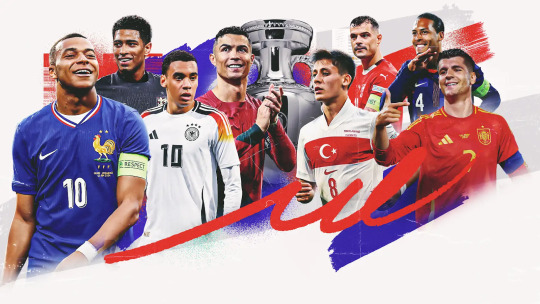
The group stage of Euro 2024 is a distant memory now, but the drama, the upsets, and the moments of brilliance still echo in our minds. From surprise package Georgia stunning Portugal to the resurgence of Germany under Ralf Rangnick, the first two weeks of the tournament were a rollercoaster ride. So, grab your favorite kit (or at least a comfortable team shirt), and let's dissect the winners and losers of Euro 2024's group stage.
Winners
Germany
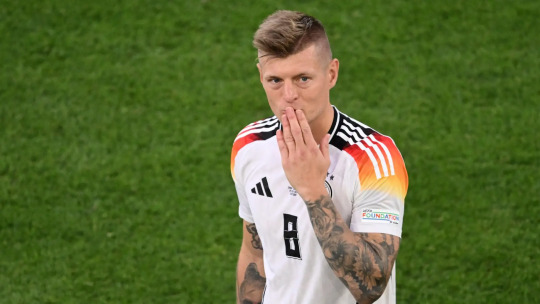
Let's face it, nobody expected much from a post-Löw Germany. But under the shrewd guidance of Ralf Rangnick, "Die Mannschaft" looked like a well-oiled machine. Their possession-based style, coupled with clinical finishing from Timo Werner and Kai Havertz, saw them top Group B with ease.
Spain
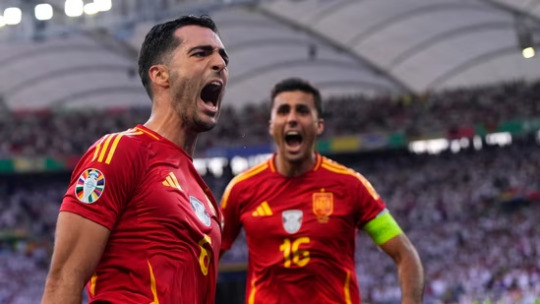
They may not have been the most exciting team to watch, but Luis Enrique's Spain did what they do best – control games and win them efficiently. With young midfield maestro Gavi pulling the strings and veteran warriors like Sergio Busquets holding things together, Spain are a force to be reckoned with.
Xherdan Shaqiri & Switzerland
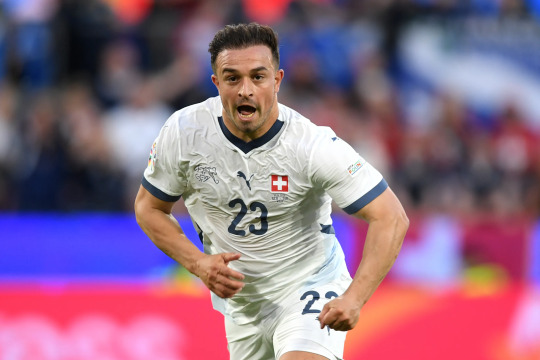
Remember the name? The little magician from Switzerland reminded everyone of his big-game temperament with a stunning brace against France. His goals not only secured a vital win for Switzerland but also sent a message – Shaqiri is still a Euro hero.
The Underdogs
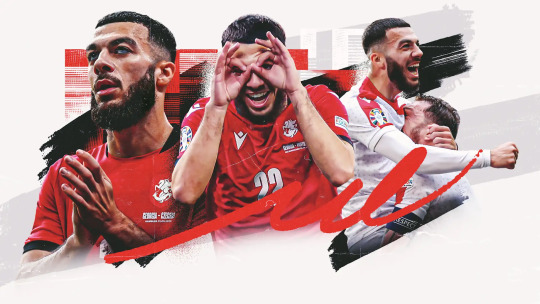
This tournament has been a celebration of the unexpected. Georgia's thrilling win over Portugal, Hungary's spirited performance against France, and North Macedonia pushing the Netherlands all the way – these underdogs brought the fight and the entertainment.
Losers
England
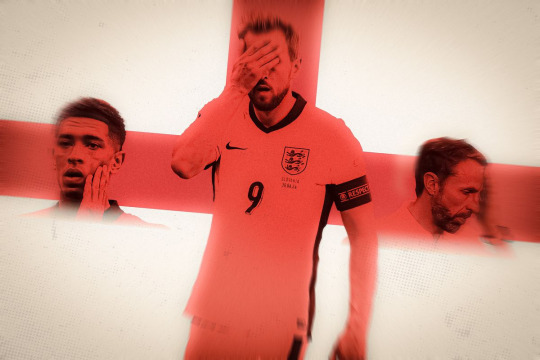
The "Golden Generation" tag is starting to feel like a cruel joke. Southgate's men stumbled through Group D, their attacking prowess blunted and their defense shaky. Harry Kane's struggles in front of goal didn't help matters either. Back to the drawing board for England.
Italy
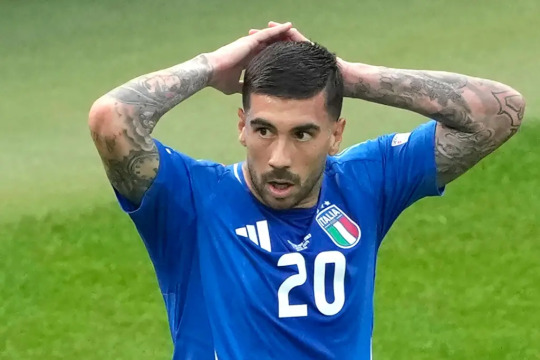
The reigning champions came crashing down to earth. A controversial late equalizer against Croatia and a heartbreaking draw against Albania left them needing a win against a rampant Spain to qualify. Ultimately, they fell short, and questions about their aging squad are swirling.
Cristiano Ronaldo
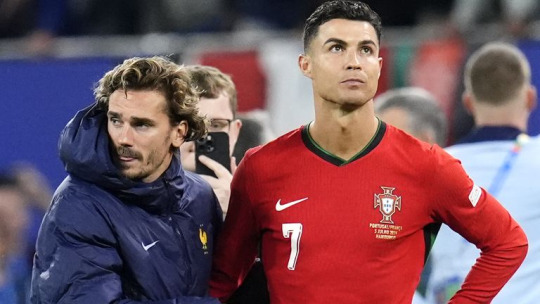
Let's not sugarcoat it – Ronaldo's Euro 2024 has been a disappointment. His frustration boiled over with a sending-off against Serbia, and his overall impact on the team has been minimal. With Portugal out, all eyes will be on how he responds in the coming months.
Gareth Bale & Wales
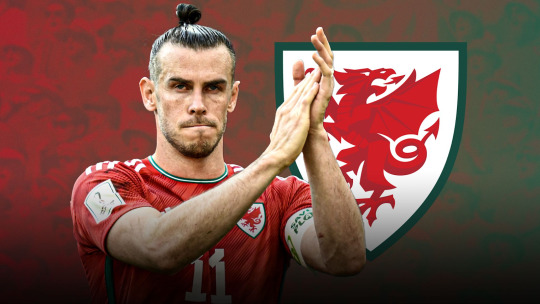
The fairytale run seems to be over. Bale, a shadow of his former self, couldn't inspire his team to a single victory. Wales' exit marks the end of an era for their golden generation.
Special Mentions
Own Goals & Long-Range Screamers
Euro 2024 has been a festival of the bizarre. From comical own goals to thunderous long-range efforts, these moments of pure footballing chaos added a touch of unpredictability to the group stage.
The Fans
Despite the absence of some traditional European giants, the stadiums were rocking. The passion of the fans, from the Icelandic Viking Thunder Clap to the unwavering support for the underdogs, was a joy to witness.
Looking Ahead
The group stage may be over, but the real drama is yet to come. With heavyweights like France, Germany, and Spain still in contention, the knockout rounds promise to be nothing short of electrifying. So, buckle up, football fans, the best is yet to come.
Who will lift the Euro 2024 trophy? Will there be any more upsets? Share your thoughts and predictions in the comments below.
➥ Related Article: Internet Reacts: Trending News, Viral Moments, Experts Reactions
0 notes
Text

Look, we all want to win our bets but there’s no tears shed if Cristiano Ronaldo gets humiliated.
Georgia were excellent in their victory over Portugal - an unlikely victory based on rankings. When UEFA expanded the Euros to 24 teams, they said it was meant to increase opportunities for nations who haven’t played at tournaments. They didn’t mean it though - there was no world they wanted where Georgia qualified and beat a mega power. But the tournament is significantly better for it.
How did we get on during our final QUAD day?
Well, Alex had his stake returned on his weird no bet bet on Slovakia v Romania and picked up a win thanks to former Everton legend Cenk Tosun.
Neil correctly predicted a draw in the Slovakia game and Türkiye to win while Tom’s bets on the same games came off too as both of them made a daily QUAD bet profit.
Here’s where we stand at the end of the group stage on day 14.
Alex: £14.80 DOWN
Neil: £6.49 DOWN
Tom: £3.10 DOWN
For Tom, this is comfortably his best performance by the end of a Euros group stage - £5 better than 2020/1, and £12ish better than 2016.
Neil is just under £6 worse off than the previous Euros but £14ish better than in 2016.
Alex is fairing £9ish better than in 2016 but £9 worse than in 2020/1.
Tom actually achieved his required £1.21 average return in yesterday’s action but is a profit realistic? Here’s how the average return picture has changed with 15 games to go.
Alex needs an average of £1.99 per game, Neil needs £1.43 and Tom is chasing £1.21.
The mercy of rest days now. Thank god.
1 note
·
View note
Text
India Football Skipper And Superstar Striker @SunilChhetri In A Moving X Post Announces Retirement

Sunil Chhetri, a player who redefined the standards of Indian football, emerged as an inspiration not only for his nation but also in the international circuit, has decided to draw the curtains on his career with the Blue Tigers.
Chhetri took to X to announce his retirement from international football. He will have his last dance in Indian colours in front of the home fans at the Salt Lake Stadium on June 6 against Kuwait.
The 39-year-old posted a video on X in which he reminisced about his career which began in 2005 on June 12 against Pakistan in a friendly match.
“There is one day that I never forget and remember quite often is the first time I played for my country, man it was unbelievable. But the day before, the morning of the day, Sukhi sir, my first national team coach, in the morning he came to me and he’s like, you’re going to start? I can’t tell you how I was feeling man. I took my jersey, I sprayed some perfume on it, I have no idea why. So that day, everything that happened, once he told me, from breakfast to lunch and the game and to my first goal in my debut, to conceding late 80th minute, that day is probably one that I will never forget and is one of the best days of my national team journey,” Chhetri said in a social media post.
“I told my mom, my dad and my wife, my family first, my dad, he was normal, he was relieved, happy, everything, but my mom and my wife started crying and I told them, you always used to bug me that there are too many games, there is too much of pressure when you watch me and now that I’m telling you that, you know, I’m not going to play for my country anymore after this game. And even they couldn’t, they couldn’t express to me as to why they, they burst into tears. It’s not that I was feeling tired, it’s not that I was feeling this or that when the instinct came that this should be my last game, then I thought about it a lot,” Chhetri concluded.
Sunil Chhetri kicked off his professional football journey at Mohun Bagan in 2002. Chhetri helped India win the 2007, 2009, and 2012 Nehru Cup, as well as the 2011, 2015, 2021 and 2023 SAFF Championship. He also led India to victory in the 2008 AFC Challenge Cup, which helped India qualify for its first AFC Asian Cup in 27 years.
Chhetri received the Arjuna Award in 2011, and the Padma Shri in 2019. In 2021, he became the first footballer to get the Khel Ratna Award, India’s highest sporting honour.
In a career that spanned over 19 years, the Arjuna Award winner has 94 goals in 150 matches on the international stage. The most-capped Indian footballer is the third-highest goal-scorer on the global stage with icons Cristiano Ronaldo and Lionel Messi ahead of him.
#news#AIFF#CristianoRonaldo#impactnews#India#June6#Kolkata#Kuwait#LionelMessi#Retirement#SaltLakeStadium#SunilChhetri
0 notes
Text
Calacus Monthly Hit & Miss – Sebastien Haller & Enhanced games february 2024
Every month we look at the best and worst communicators in the sports world from the last few weeks.
HIT - SEBASTIEN HALLER
The late, great Daily Mail sport columnist Ian Wooldridge once wrote: “There are days when sport reaches the sublime heights of unscripted theatre and draws from men and women performers resources of nerve and skill beyond human comprehension.”
The magic of sporting contest is that it can be so unpredictable that it is often said that no one would believe it if you made a movie about what you’ve just witnessed.
This month’s African Cup of Nations (AFCON) certainly fits that description, with striker Sebastien Haller front and centre in the drama.
Ivory Coast, the hosts, looked set to exit the competition after a disastrous group stage, when they lost twice, including a heaviest ever home – and Nations Cup finals – defeat when losing 4-0 to Equatorial Guinea.
Manager Jean-Louis Gasset was promptly sacked, but the team got a reprieve when Zambia failed to get the result they needed to finish above the hosts as a best third-placed side.
Haller had not featured in those first few matches due to an ankle injury, but his comeback is far more dramatic than a typical footballer’s injury.
A former France youth international, Haller made his name at Eintracht Frankfurt before joining Premier League side West Ham for a then club-record fee of £45million in July 2019.
He failed to replicate his Bundesliga form, scoring only 10 goals in a year and a half before moving to Ajax.
Haller twice helped the Dutch giants win the Eredivisie and became only the second player, after one Cristiano Ronaldo, to score in all six of his club’s group-stage Champions League games, and the fourth, with Ronaldo, Lionel Messi and Robert Lewandowski, to reach double figures in the competition’s group phase.
This prompted Borussia Dortmund to sign him to replace Erling Haaland, where his impressive form was stopped in its track by a tragic turn of events.
In July 2022, just two weeks after signing, the forward complained of abdominal discomfort and during a consultation with a urologist, a testicular tumour was discovered.
Haller promptly underwent surgery to remove it and within the week, he had started receiving chemotherapy.
In a Canal+ documentary called ‘Fight’, Haller’s wife Priscilla described the news Haller had a tumour as a “nightmare.”
“When (he) told me on the phone, I didn’t believe it — it’s a joke,” she said. “Until he got upset because he takes the blow and on top of that has to convince me. I understood what it was to be really afraid. I was scared and had the fear of my life.”
Haller was determined to play football again as quickly as possible and had a personal trainer devising tailored exercise programmes for him in hospital.
When Haller attended the Ballon d’Or ceremony in Paris with Priscilla, the extent of his illness was clear for all to see, his hair loss as a result of chemotherapy a stark reminder of how gravely unwellhe had been.
Haller was voted the 13th best player in the world for his achievements with Ajax, and also went up on stage to present an award.
He was encouraged by his idol, former Ivory Coast captain and fellow striker Didier Drogba, to provide an update on his condition and said: “Everything is fine. I’m here because everything is going as well as it can. It’s important to be involved at such events to show that you’re strong.”
That turned out not to be the case.
A month after the Paris ceremony, he needed a second, more dangerous procedure, to remove the residual findings from the tumour, which took over four hours.
When Haller was eventually given the all-clear, he flew with his team-mates to Dortmund’s winter training camp in Marbella, telling reporters that “(retiring) was never on my mind.”
On January 10 2023 Haller was greeted with applause from his team-mates, club staff, opposition players and supporters as he finally stepped onto the pitch for the first time in a Dortmund shirt for a friendly against Fortuna Dusseldorf.
“It’s been a dream to play with my team-mates, certainly more fun than doing runs through forests,” he said afterwards.
Two weeks later, he made his official debut for Dortmund, and first competitive appearance since recovering from cancer, coming off the bench in a 4-3 victory over Augsburg.
The words “F*CK CANCER” were inscribed on his boots.
It was fitting that on World Cancer Day, in early February 2023, Haller scored his first goal for Borussia Dortmund, heading into the net against Freiburg in front of 80,000 supporters at Signal Iduna Park and subsequently swamped by a horde of yellow-clad team-mates.
He pointed to that message on his boots as part of his celebration and he said afterwards: “To score today was a great message to everyone who is fighting today or will fight later.
“It gives some hope, some courage. The days after will always be better. You only want to score another goal, to have that feeling again. It’s the best feeling.
“You’re flying. You’re on a cloud. The whole stadium is on fire. Your team-mates, the staff, everyone is as one. It’s a big boost. There’s still a long way to go, but we will walk down that path.
"Of course, you realise it is something really serious that is happening, that a lot of things can change. It's important to tell it straight about cancer.
“But the urologist helped me not to be scared. He said I could heal well. I took all his words for granted.”
With Ivory Coast struggling and scoring just twice in the AFCON group stages, Haller’s recovery from his ankle injury took on added significance.
"After the big defeat against Equatorial Guinea, we had no choice," Haller said.
"We've come back from a long way. There were words, moments, which were not easy for the players, staff and everybody [but] which were necessary."
Haller’s teammate Seko Fofana said that Haller's struggles with health and fitness inspired squad unity, especially after their coach was sacked in the group stage.
"He was a benefit to others in the team, always giving something else to this group," Fofana mused. “[Consequently] we're now a unit, a collective, and we can be very happy about it.”
Losing against defending champions Senegal, Haller was thrown on late in normal time to help save the game, and his perfect through ball to Nicolas Pepe saw the former Arsenal winger fouled in the penalty area.
Franck Kessie equalised from the spot to take the game into extra time with Haller scoring in the penalty shootout, with the Ivorians knocking out the holders 5-4.
Still not fit enough to start games, Haller was brought on against Mali in the quarter-final with the team down to 10 men, hitting the bar before Oumar Diakite scored in the 122nd minute to see the hosts through 2-1.
In the semi-final against DR Congo, Haller scored the only goal with a volley into the ground, which bounced over goalkeeper Lionel Mpasi and into the net.
That gave Haller the chance to put his health problems behind him, and looking forward to the final, he said: “The last 18 months have been quite challenging for myself and the family. I just take everything step by step and I just try to enjoy the moment. I don't want to have any regrets.
“It’s a great moment to be here in front of you, talking about the final of AFCON in my own country. It will take a few months, or a few years, to really realise what happened (to me).”
Hollywood scriptwriters would have ensured Haller scored the winning goal in front of his home fans, a scenario which looked unlikely when William Troost-Ekong had put Nigeria ahead seven minutes before half-time.
Kessie equalised with just over an hour gone before Haller seized his moment, flicking the ball into the net from Simon Adingra's cross in front of 60,000 fans at Abidjan's Alassane Ouattara Stadium.
An emotional Haller broke down in tears after the final whistle, the reality of his achievement hitting home.
"We dreamed of this moment so many times," Haller said. "We hoped to get to this point and once again the match wasn't an easy one. The joyous scenes we see now, what's happening in the country, they deserve it too. I really hope it does a lot of people good."
Haller was congratulated by Ivorian President Alassane Ouattara after picking up his winners' medal, perhaps in recognition of the impact his return had on Ivory Coast's Éléphants.
Understandably, Haller was front and centre of the team's trophy parade through the centre of Abidjan the following day, the victory a show of unity coming only 13 years since the end of Ivory Coast’s second civil war.
But victory was about more than just lifting the AFCON trophy for the first time since 2015.
Thousands of Ivory Coast fans came to celebrate on the streets of Abidjan, adorning the team’s orange and white colours, a national holiday called to celebrate the championship success.
Haller’s dignified and determined fight against cancer, his impact on the team and the entire nation underlined how sporting prowess can have a positive impact on society.
It’s a reminder not only of the importance of sport, but how its impact transcends the field, bringing joy, hope and inspiration to millions.
MISS – ENHANCED GAMES
With the recent backing of PayPal billionaire Peter Thiel and other tech businessmen, it looks like the controversial Enhanced Games has the financial backing to take place in 2024.
The Enhanced Games is a proposed international athletic competition, not unlike the Olympic Games, but with one major difference: they explicitly do not test for Performance Enhancing Drugs (PEDs). This is not to say that athletes are forced to dope, but rather than doping is perfectly permissible in the eyes of the organisers.
Their stated goal is to see how far humans can go, using a combination of chemical and technological doping; the former including anabolic steroids and hormone therapy, the latter technology like ’super trainers’ and swimsuits based on sharkskin.
The main philosophy of the Enhanced Games is that PED use should be seen as a ‘demonstration of science’ rather than as cheating.
Is this philosophy legitimate? It is true that no athlete succeeds on their own, and that every Olympic champion has a team of nutritionists, coaches and trainers, equipment designers, physiotherapists, friends, and family behind them. Why not add a pharmacist to the list?
The point could be made that high-altitude training could count as an unfair advantage, given that it is only available to athletes from countries that can either afford to fly them there, or who happen by chance to host training facilities in the mountains. It certainly gives athletes a clear and measurable edge over those that don’t have the option.
From a different perspective, a world-class swimmer like Michael Phelps has longer-than-average arms and a torso that is proportionally longer compared to his legs, as well as size 14 feet and a body that produces half the lactic acid of an average swimmer, but he is celebrated as a natural superhuman.
Meanwhile, women such as champion runner Caster Semenya, whose bodies produce higher than average testosterone levels, are punished and forced to take supplements to bring their hormone levels back down to average.
Clearly, there are grey areas when it comes to genetic and competitive advantages, so it could be argued that any and all enhancements should be allowed. That way, an athlete’s performance on the international stage would represent the combined scientific and sporting abilities of their nation to achieve victory as well as any genetic gifts they have.
Given the allegations of the Russian state-sponsored doping program that saw the state formally expelled from the Olympic Movement, forcing the nation’s athletes to compete as independents, this could be more endemic than we currently think.
The Enhanced Games also claim to have a vastly improved pay structure compared to the Olympic Games, including a stipend for all athletes that compete, as well as substantial prizes for the most successful – including up to and above $1m for gold medallists.
Olympic Games silver medallist James Magnussen has indicated he’d be more than happy to come out of retirement and take steroids if it meant a large payday.
He said: “They [Enhanced Games] have said they have a billion-dollar person backing them.
“If they put up a million dollars for the freestyle world record, I’ll come on board as the first athlete. I’ll juice to the gills and break it in six months.”
Three-time swimming gold medal winner Leisel Jones has argued that the Enhanced Games might actually benefit the Olympic Games.
“It might actually keep the clean sport, clean,” she said. “If this clears out people who genuinely want to [take PEDs] and are doing illegal things in sport, if that clears them out of clean sport, that would be wonderful.”
However, she has said that while she might be interested in commentating, she wouldn’t be interested in coming out of retirement to take part herself.
“I don’t want to participate in it myself, I’m not in a position to do that. The risks are too big for me I think for the side effects and whatnot.
“But I am happy to see other people do this. I would watch it for sure. I just want to know how fast they can go.”
There is some truth in the argument that traditional athletics has been afflicted by illicit drug use. Beyond Russia, a 2017 study carried out by the World Anti-Doping Agency (WADA) suggested that as many of half of tested athletes had used PEDs in the last year.
Two parallel Games, one ‘natural’ and one ‘Enhanced’ could, properly enacted, result in fairer competition for all.
However, the Enhanced Games has understandably been strongly criticised by anti-doping agencies all over the world.
Travis Tygart, CEO of the US Anti-Doping Agency, described the Enhanced Games as ”farcical… likely illegal in many states” and “a dangerous clown show, not real sport”
In a release, WADA further condemned the new Games, calling it “a dangerous and irresponsible concept.”
“WADA warns athletes and support personnel, who wish to participate in clean sport, that if they were to take part in the 'Enhanced Games', they would risk committing anti-doping rule violations under the World Anti-Doping Code,
"Athletes serve as role models and we believe this proposed event would send the wrong signal to young people around the world.”
Australian Olympic Committee chief Matt Carroll added that: “The Australian Olympic Committee believes the concept of a drug-enhanced games is dangerous.
“We know next to nothing about this organisation but sport needs to be clean and it needs to be safe for all athletes,
“The Olympic Movement is devoted to clean sport and athletic excellence, celebrating the best in humanity, excellence, friendship and respect.”
A spokesperson from UK Anti-Doping has described the Games as ”‘unsafe, dangerous to athletes’ health and wellbeing [and flying] in the face of fair play.
"We believe competing is about respect, hard work and determination, not a dangerous game of endorsing drug use to enhance performance. We are committed to working with athletes to champion their rights, their health and their wellbeing.”
Even cyclist Joseph Papp, who was suspended in 2006 for PED use, has come out against the Enhanced Games.
“A doping free-for-all just invites the most ambitious person to be the most reckless person, and to take the most drugs possible without literally killing themselves.”
Athlete safety should be paramount in any sporting competition, and it is unclear how PEDs that are illegal in many countries would be regulated to ensure fair access for all competitors.
The condemnation that the Enhanced Games has received is also not limited to the world of sports: their messaging appears to be mimicking that of other, serious, political movements.
One of the Enhanced Games website slogans is: ‘My body, my choice,’ clearly attempting to echo the pro-choice slogans of pro-abortion activists.
Aron D’Souza, President of the Enhanced Games, said: “Fifty years ago, being a gay man was like being enhanced today. It’s stigmatised, it’s illegal in some sense and it’s done in a dark alley.”
In referencing a picture on the Enhanced Games website of an athlete holding up a flag bearing the event’s stylised “E+” logo, he added: “What changed for the LGBT community was pride — there was a flag to rally around and if you look at our website, it is intentional. What’s our first picture? A flag. Maybe this was our Stonewall moment.”
That is a bold claim even for a gay man like D’Souza to make, given the long and deeply oppressive experiences that LGBT+ communities have undergone throughout history.
There’s clearly a shock value aspect to the Enhanced Games’s communications strategy.
A further slogan of the Enhanced Games is ‘Science is real,’ echoing pro-vaccination arguments during the Covid Pandemic. These attempts to co-opt major worldwide political issues for the gain of the Enhanced Games organisers and investors is unlikely to improve the organisation’s credibility.
Whether or not they can attract sufficient athletes remains to be seen. At the time of writing, very few have publicly supported the new competition.
D’Souza claimed that 500 ‘sleeper’ athletes had privately agreed to take part, but so far none have spoken publicly, raising doubts about whether the Enhanced Games can go ahead.
With the very real safety concerns, the question remains: who will actually benefit from the Enhanced Games? It may certainly garner some initial attention, but what sponsors would want to be associated with such a controversial competition which would potentially undermine their own ethics and ethos?
D'Souza claims that he has no need for further investment, and that this is simply a project to see what humanity is capable of. But the financial incentives offered to attract athletes will need funding if the Enhanced Games are to ensure.
There is so much that the Enhanced Games have got wrong from a communications perspective.
Instead of demonstrating an understanding of the concerns and addressing them in a sensitive way, the approach has been one of aggressive belligerence.
Whether more athletes will sign up for the Enhanced Games in the fullness of time remains to be seen.
The risks to athlete safety alone will ensure continued widespread condemnation from the sports world and beyond.
#AFCON#Ivory Coast#West Ham#Ajax#Borussia Dortmund#Sebastien Haller#Franck Kessie#African Cup of Nations#Didier Drogba#cancer#Eintracht Frankfurt
0 notes
Text
Jude Bellingham the next Zidane? #judebellingham #bellingham #zidane
Jude Bellingham, the next Zidane? #judebellingham #bellingham #zidane https://www.youtube.com/watch?v=1FG8o-fcKR4 Jude Bellingham, the next Zidane? Embark on an extraordinary football journey with Jude Bellingham, the young star rapidly making a name for himself on the international stage. Discover how his early career in Birmingham laid the foundation for his success at Real Madrid, drawing comparisons to the legendary Zinedine Zidane. Analyze his dynamic performances and debate whether he can surpass the achievements of Zizou. Is Bellingham destined to be a La Liga legend? Join us in uncovering the potential of this exciting talent. Music Credits: The music is Licensed from Artlist: License Number - o93zll The video is about Is Jude Bellingham the Next Zidane?: A Deep Dive into His Rising Career but also tries to cover the following subject: Birmingham's Rising Star Real Madrid's New Talent Comparing Football Legends TITLE : Is Jude Bellingham the Next Zidane?: A Deep Dive into His Rising Career | Goal Heroes ✅ Subscribe To My Channel For More Videos: https://www.youtube.com/@GoalHeroes/?sub_confirmation=1 ✅ Stay Connected With Me: 👉 Instagram: https://ift.tt/Nn5yAM2 👉 TikTok : https://ift.tt/3pVyzU5 👉 Facebook: https://ift.tt/Ly0C1g3 👉 (X) Twitter: https://twitter.com/goal_heroes ============================== ✅ Other Videos You Might Be Interested In Watching: 👉 The Rise and Fall of Football Icons: The Shocking Truth Behind Ronaldinho's Downfall | Goal Heroes https://www.youtube.com/watch?v=RQvu7Q1rGZE 👉 Inside Ronaldo's Garage: Showcasing His 10 Most Luxurious Cars | Goal Heroes https://www.youtube.com/watch?v=sMworvM_W7s 👉 Off the Field Fun: The Unusual Hobbies of Top Football Players | Goal Heroes https://www.youtube.com/watch?v=wmHUtEIGeOE 👉 Football Romance: Meet the Top 10 Stunning Wives and Girlfriends in Football | Goal Heroes https://www.youtube.com/watch?v=Jk-6WgjrEmo ============================= ✅ About Goal Heroes: Welcome to Goal Heroes, the ultimate destination for football fans who want to dive deeper into the lives of their favorite football players: Cristiano Ronaldo, Messi, Neymar among others. Subscribe! For Collaboration and Business inquiries, please use the contact information below: 📩 Email: [email protected] 🔔 Subscribe to my channel for more videos: https://www.youtube.com/@GoalHeroes/?sub_confirmation=1 ===================== #judebellingham #risingstar #footballtalent #laliga #realmadrid #zinedinezidane #midfieldgenius #soccerprodigy Disclaimer: We do not accept any liability for any loss or damage which is incurred from you acting or not acting as a result of reading any of our publications. You acknowledge that you use the information we provide at your own risk. Do your own research. Copyright Disclaimer: Under Section 107 of the Copyright Act 1976, allowance is made for "fair use" for purposes such as criticism, comment, news reporting, teaching, scholarship and research. Fair use is a use permitted by copyright statute that might otherwise be infringing. Non-profit, educational or personal use tips the balance in favor of fair use © Goal Heroes via Goal Heroes https://www.youtube.com/channel/UCilpRBmkFWN32kzz1yAuaBA January 16, 2024 at 10:06PM
#legendaryplayers#favoritefootballplayers#luxurious#inspiring#footballer'sworld#garethbale#thrillingexploration#unexpectedfacets
0 notes
Text
Will Chhetri Add to His Goal Tally?
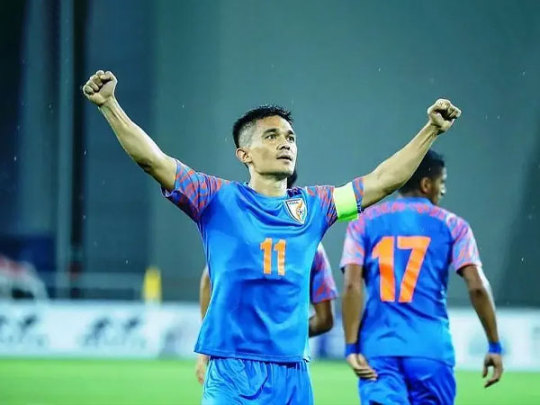
Whenever you think of footballers that have scored the most goals in international competitions, it makes perfect sense to think of superstars such as Cristiano Ronaldo.
But for many football fans, it is surprising to find out that Indian forward Sunil Chhetri has scored ninety-three goals for his nation since he made his debut back in 2005.
Chhetri is basically everything for the Indian national team: he is the captain, he has been capped the most times, and he has scored the most goals for India.

With also four goals under his belt in Asian Cup competitions, Sunil Chhetri will be determined to get India to the knockout phase in the upcoming Asian Cup tournament in Qatar.
At thirty-nine years of age, it is amazing that Chhetri continues to score goals for the Blue Tigers.
India has been drawn in Group B with Australia, Uzbekistan, and Syria. The first match for India will take place on 13 January against the Socceroos in Al Rayyan.
Online bookmaker Bet365 has the latest wagers and currently Australia is favored with 1/22 odds while India has 40/1 odds, and the odds for a draw are 14/1.

Chhetri is familiar with his first opponent as India was defeated 4-0 by Australia in its first match of the 2011 Asian Cup.
Ironically, the 2011 Asian Cup was held in Qatar and the match against the Aussies was also played in Al Rayyan.
Today, Australia is not the same powerhouse team won the 2015 Asian Cup. But it is safe to say that India should not be a tough opposition.
But even though India has not been a highly respected team in Asian football, it is worth noting that India was minutes away from advancing to the knockout phase at the 2019 Asian Cup.
Four years ago, India started the tournament with an excellent 4-1 win over Thailand but was defeated 2-0 by UAE in its second match.

India nearly held on for a scoreless draw against Bahrain, but a goal in stoppage time from the penalty spot meant India finished bottom of the group.
In all honesty, I think India has a chance to make it to the knockout phase. But it won’t be easy, and it might come down to goal difference.
This means that India must park the bus against Australia and make sure the score stays low.
Prediction: Australia 2-0 India

【Useful Links】 ・How to Open a Bet365 Account
【Latest Bookmaker Info Sports Article】 ・Juventus Looks to Extend Unbeaten Streak Against Roma
0 notes
Text
Cristiano Ronaldo's Short Video
In this particular Short, I take on the challenge of sketching soccer superstar Cristiano Ronaldo, capturing his likeness with incredible detail and skill. Viewers can watch as my hand moves across the paper, bringing Ronaldo's features to life in a mesmerizing time-lapse that demonstrates the true artistry of my craft. Whether you're a fan of Ronaldo, Yubi Art, or just appreciate the beauty of pencil art, this video is sure to leave a lasting impression.
Short: https://youtube.com/shorts/dtrjdMWdLpo?feature=share
Full video: https://youtu.be/khyOiUSwSfM
Follow me on
Instagram: https://www.instagram.com/yubi_art22/
Facebook: https://www.facebook.com/yubiart22
Pinterest: https://in.pinterest.com/yubiart22/
YouTube: https://www.youtube.com/@YubiArts
#ronaldo drawing#Cristiano Ronaldo drawing video#Cristiano Ronaldo drawing#Cristiano Ronaldo drawing easy#Cristiano Ronaldo drawing step by step#Cristiano Ronaldo drawing sketch#Cristiano Ronaldo drawing tutorial#Cristiano Ronaldo drawing pencil#Cristiano Ronaldo drawing easy trick#Cristiano drawing#Ronaldo drawing easy#Ronaldo drawing pencil step by step#Ronaldo drawing simple#yubi art#how to draw Cristiano Ronaldo#cr 7#football player#cristiano ronaldo
0 notes
Text
youtube
How To Draw Cristiano Ronaldo | Sketch Tutorial Learn how to draw Cristiano Ronaldo. Welcome to the Cartooning Club Channel, the ultimate destination for all your drawing ... via YouTube https://www.youtube.com/watch?v=uD9WYhx1TDc
#how to draw#drawing#tutorial#sketch#illustration#How To Draw Cristiano Ronaldo | Sketch Tutorial#Youtube
0 notes